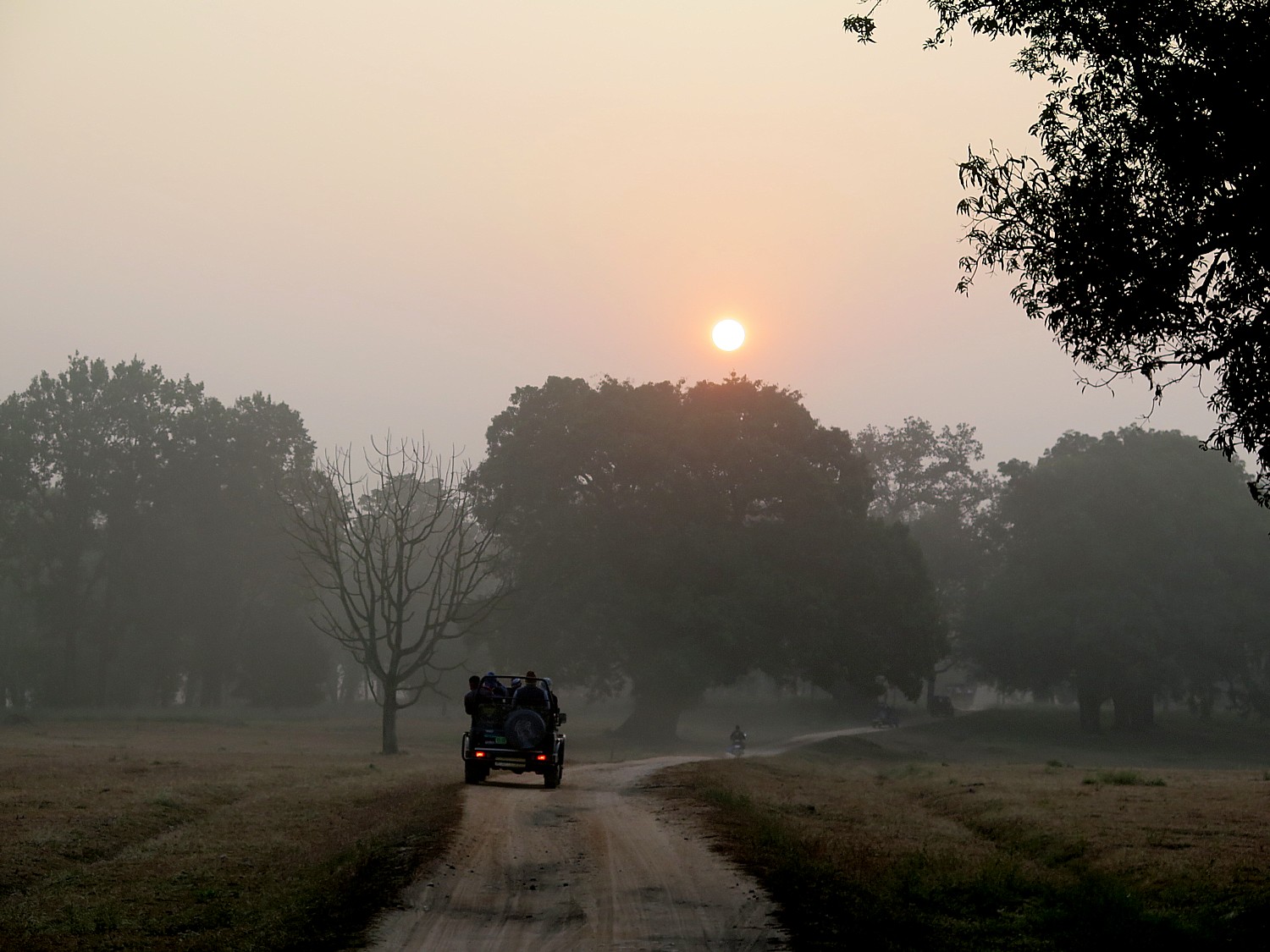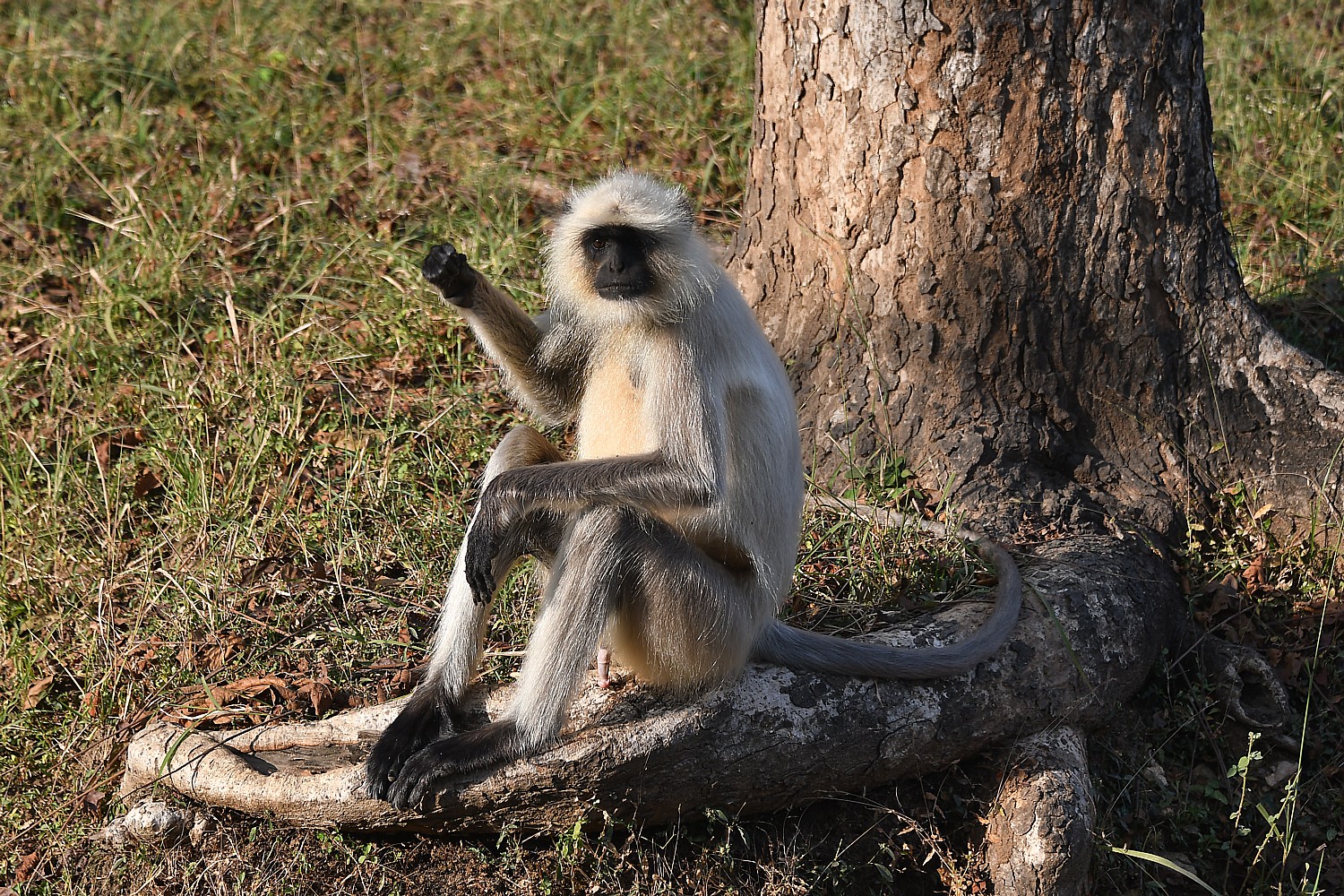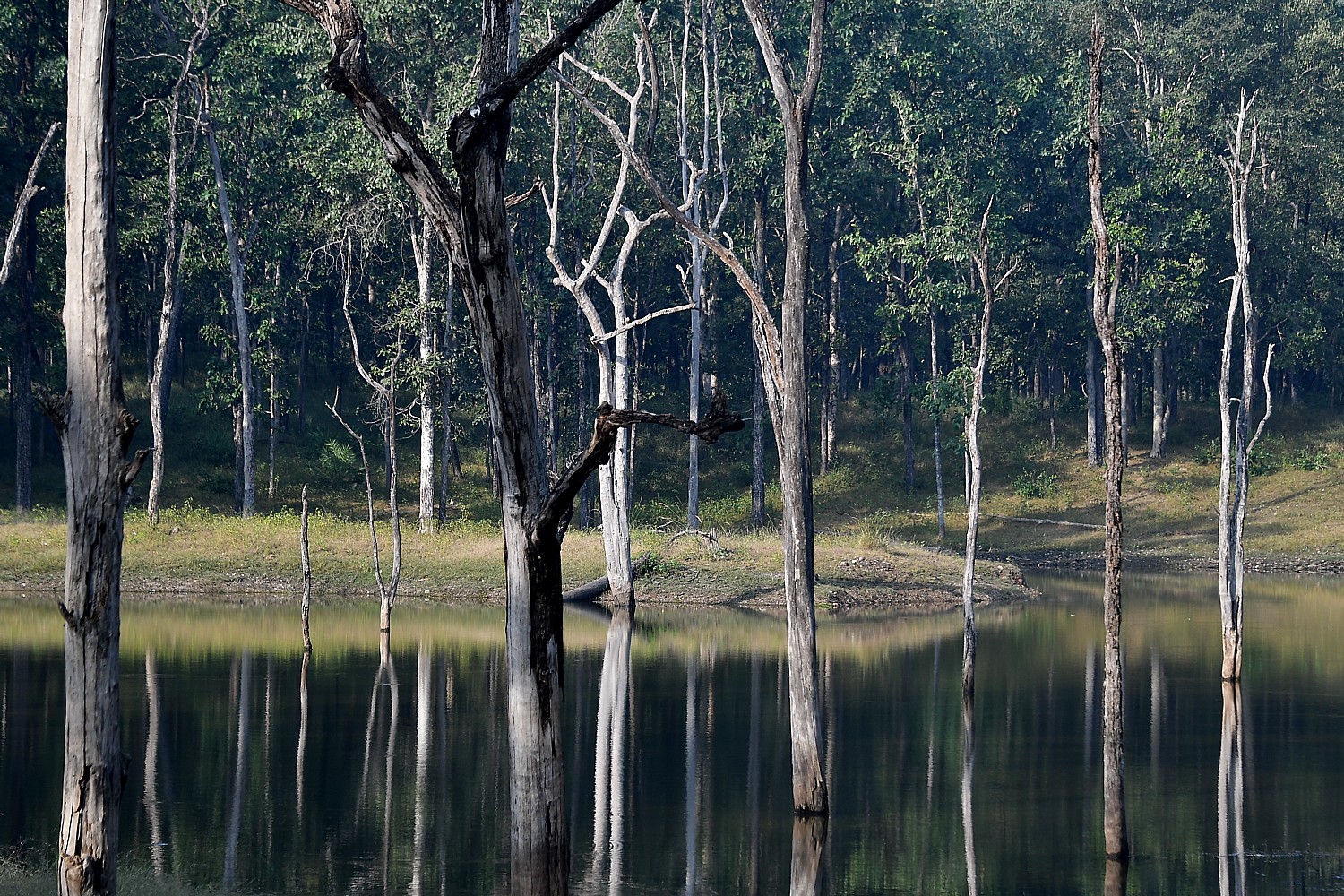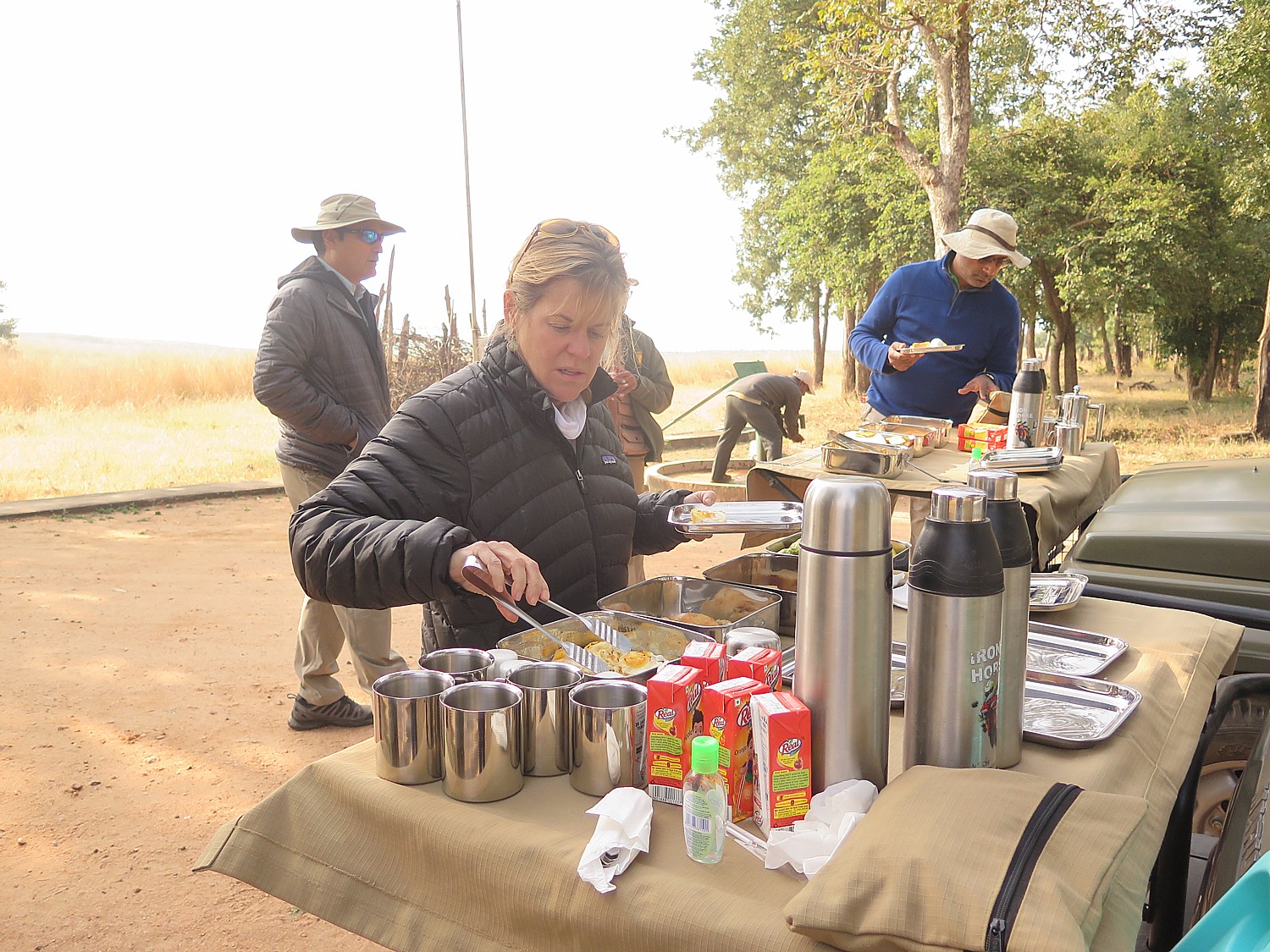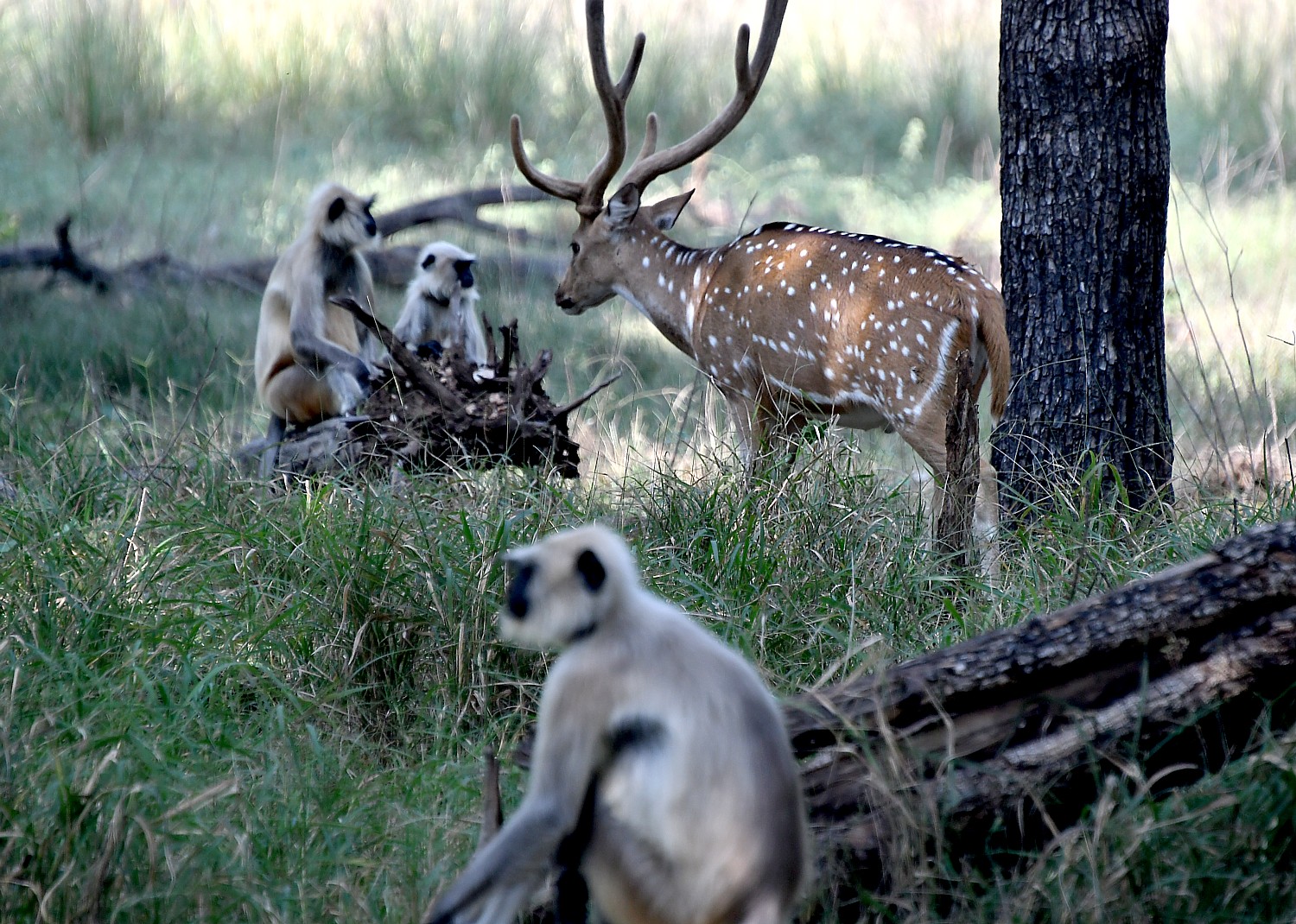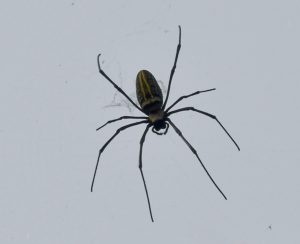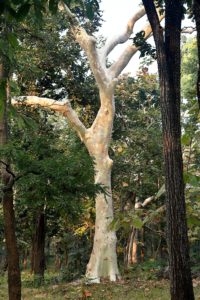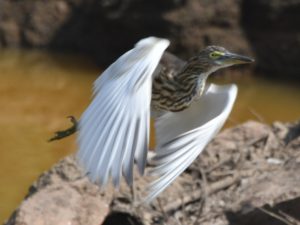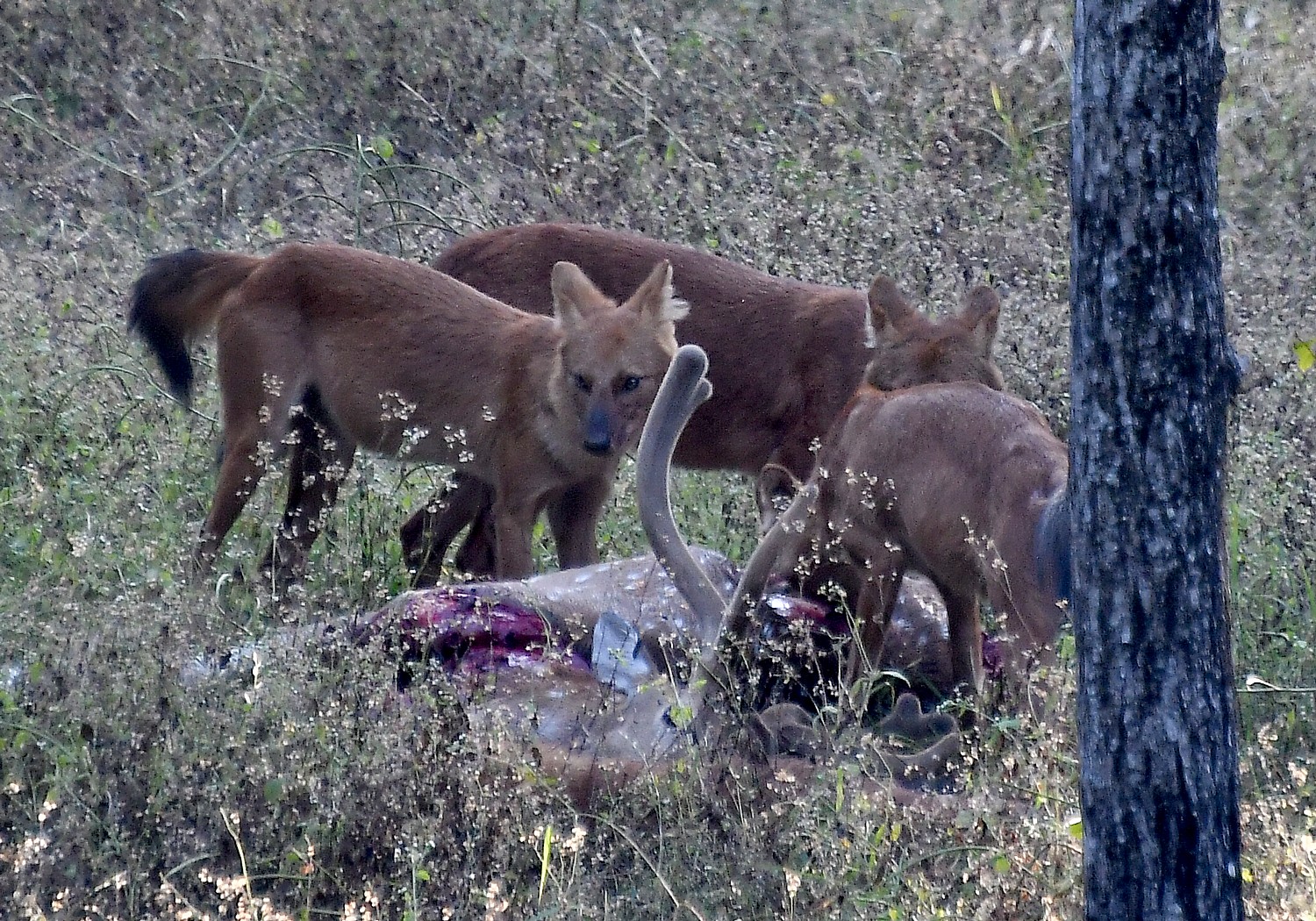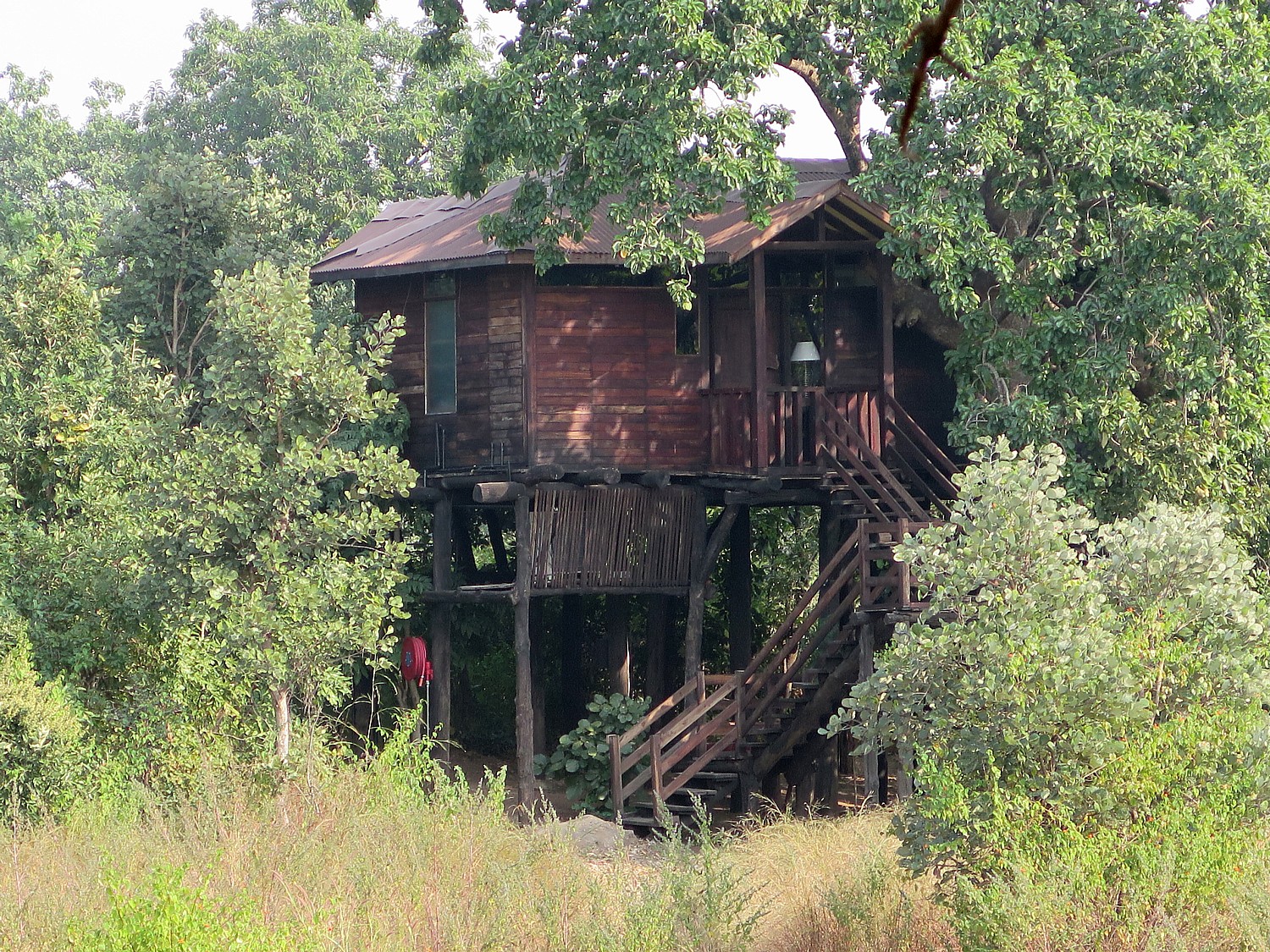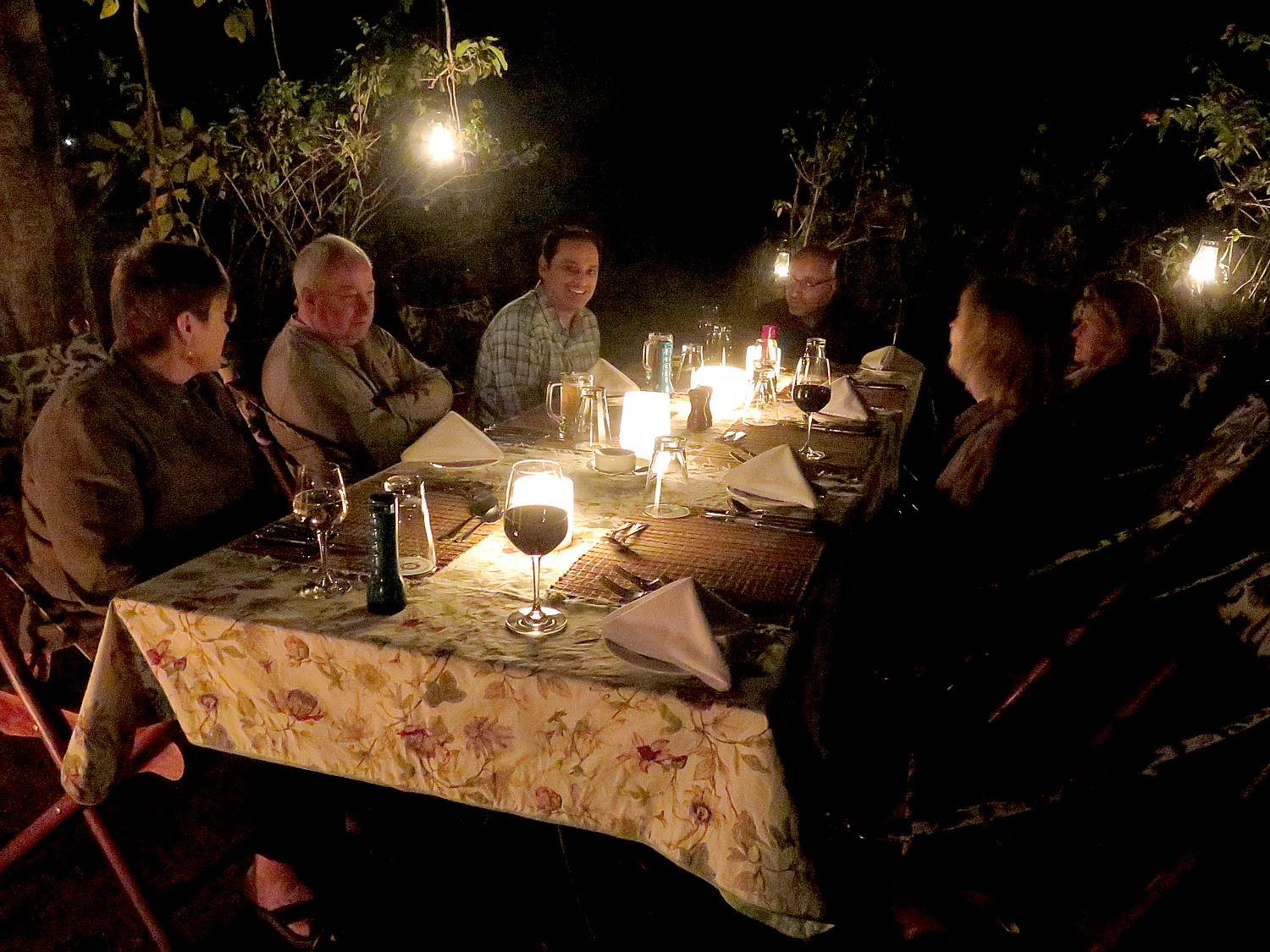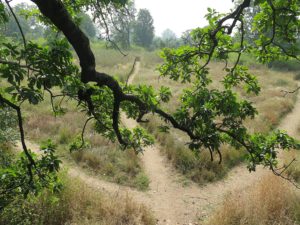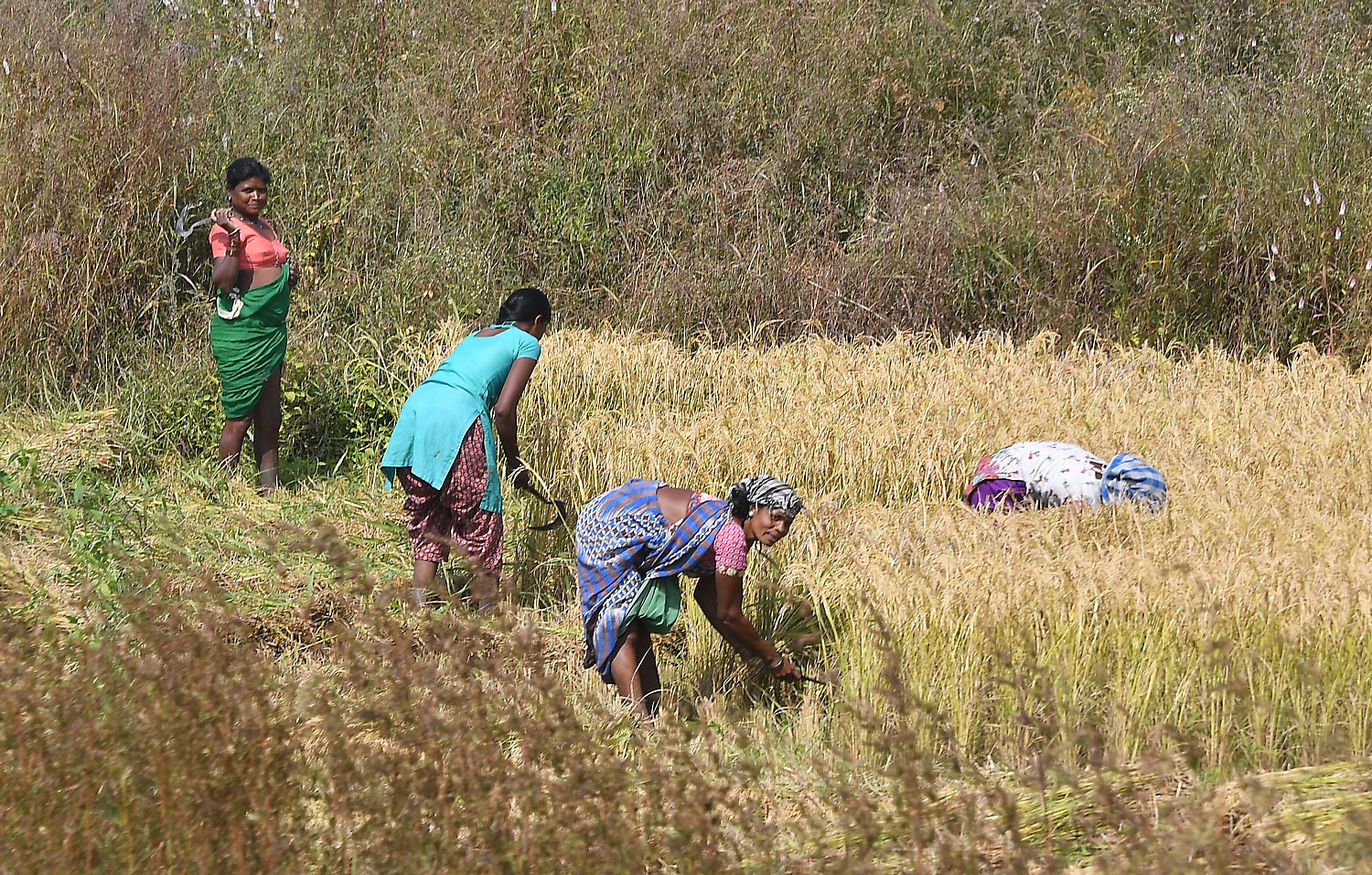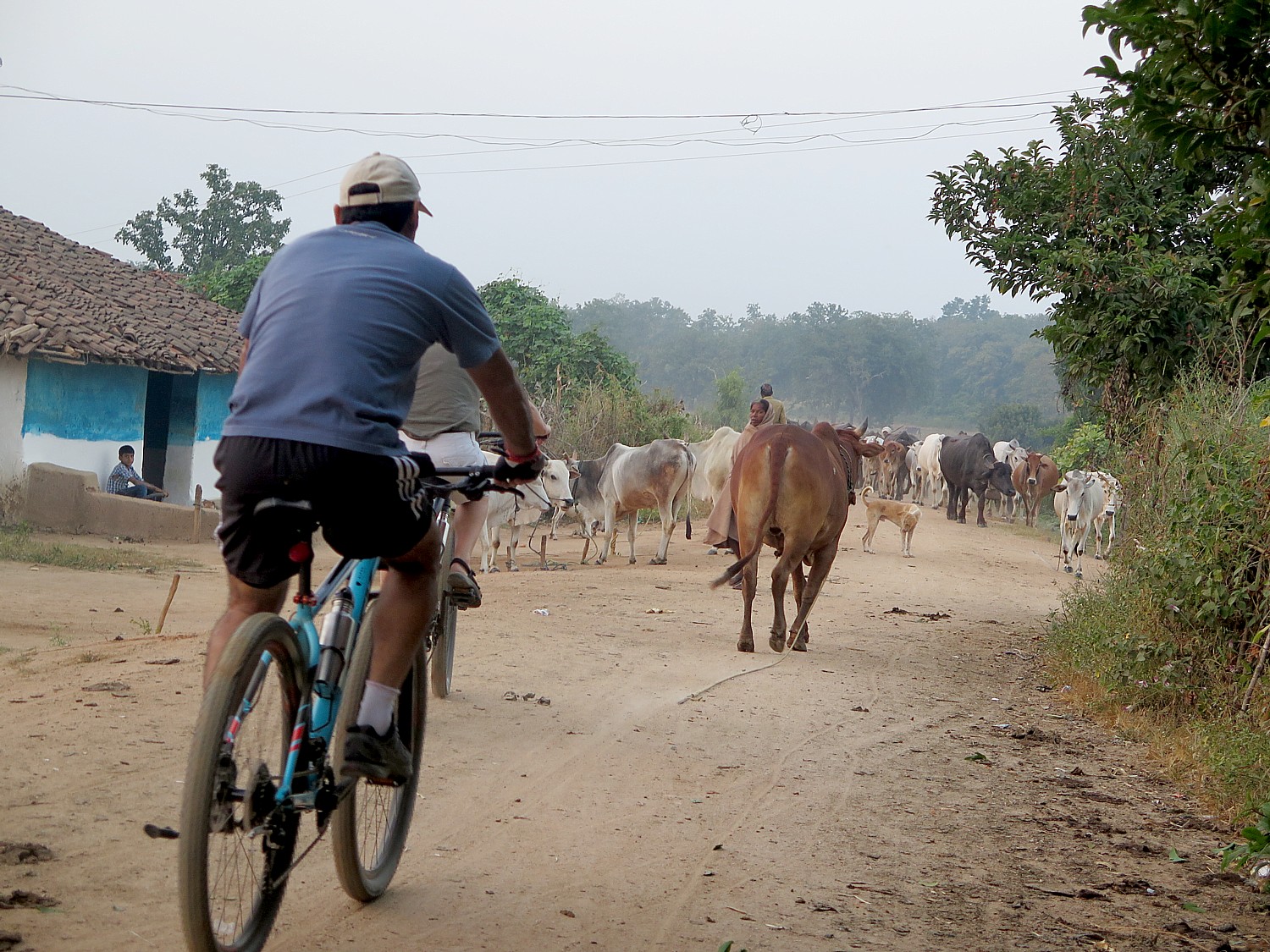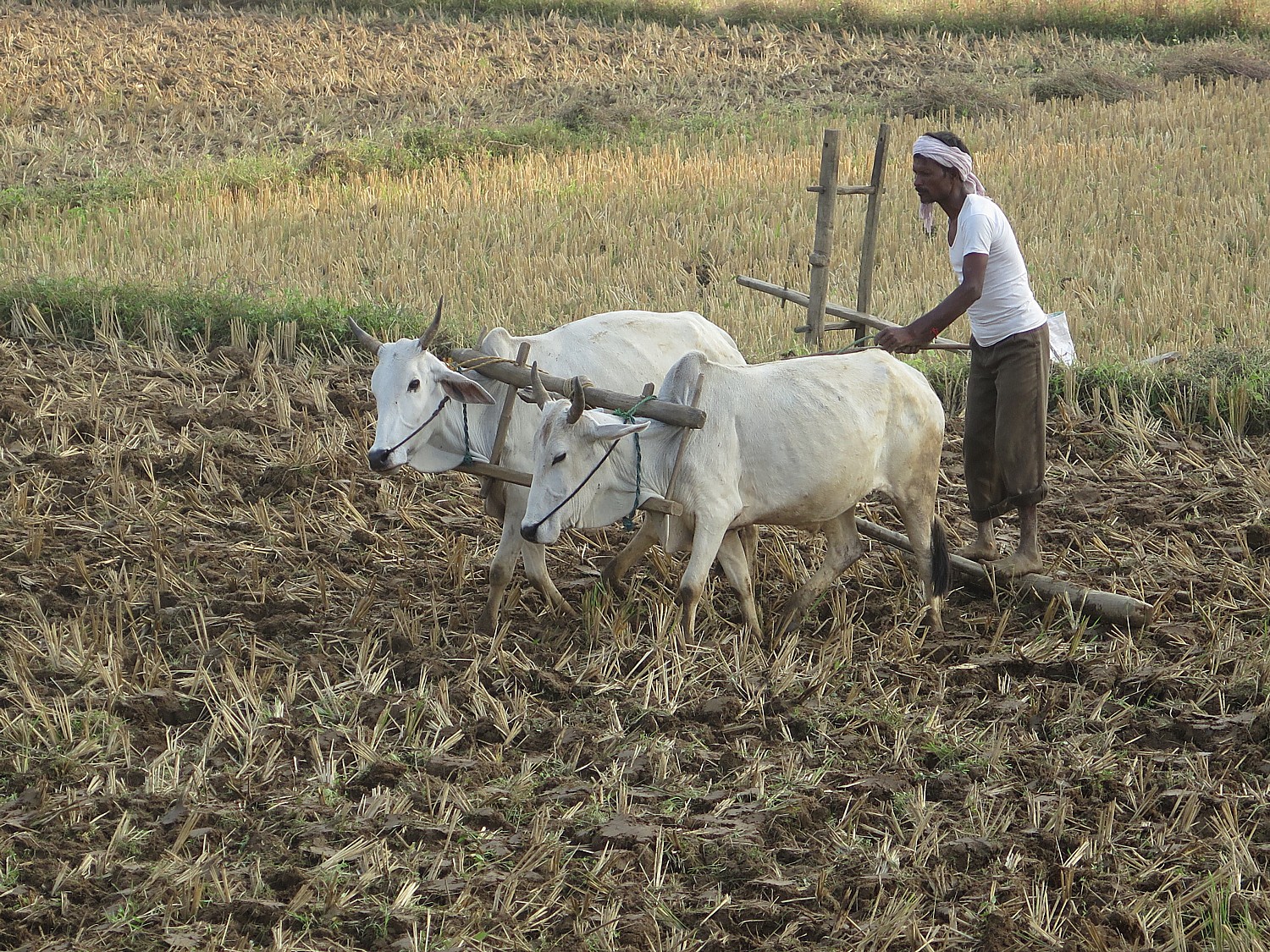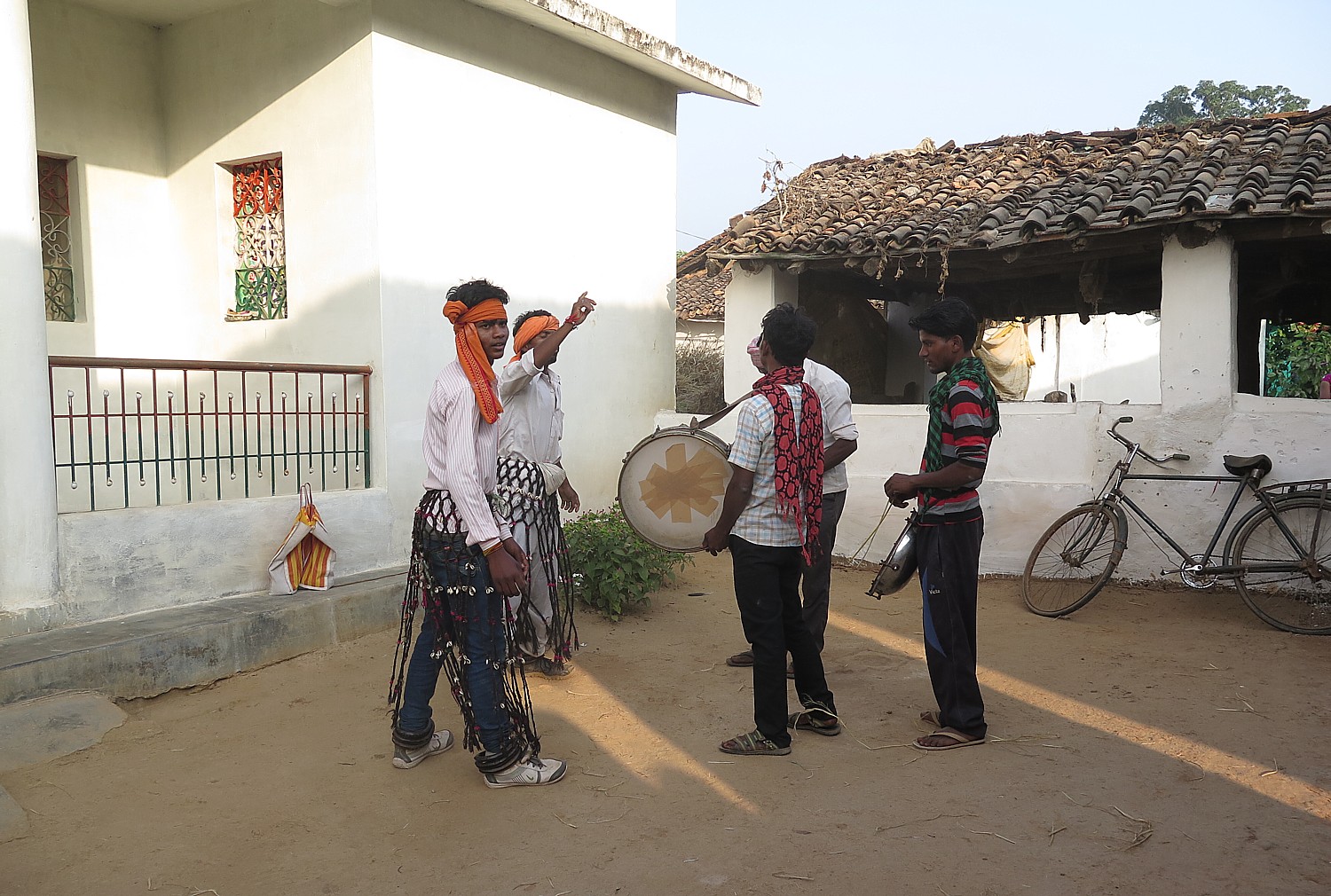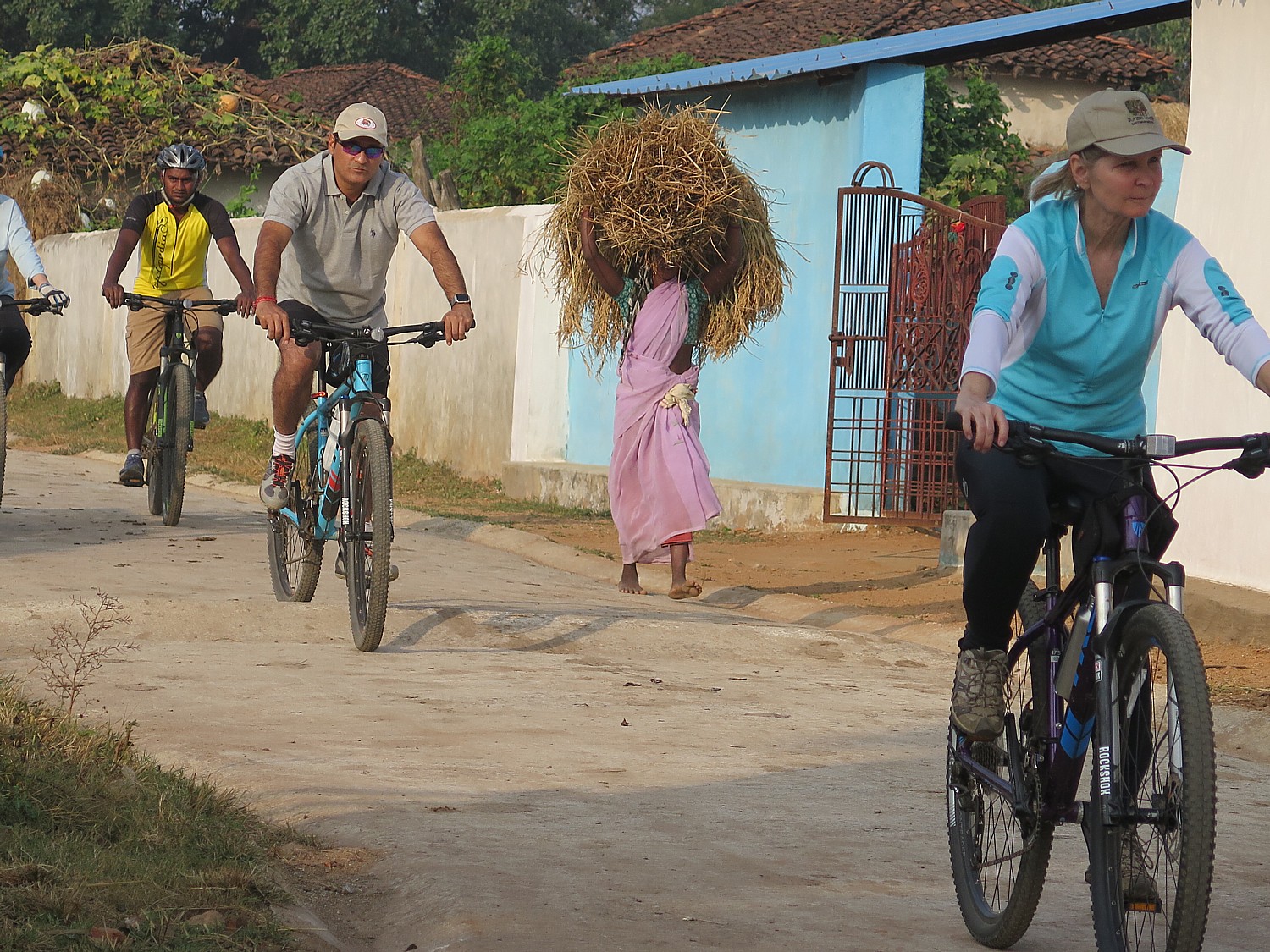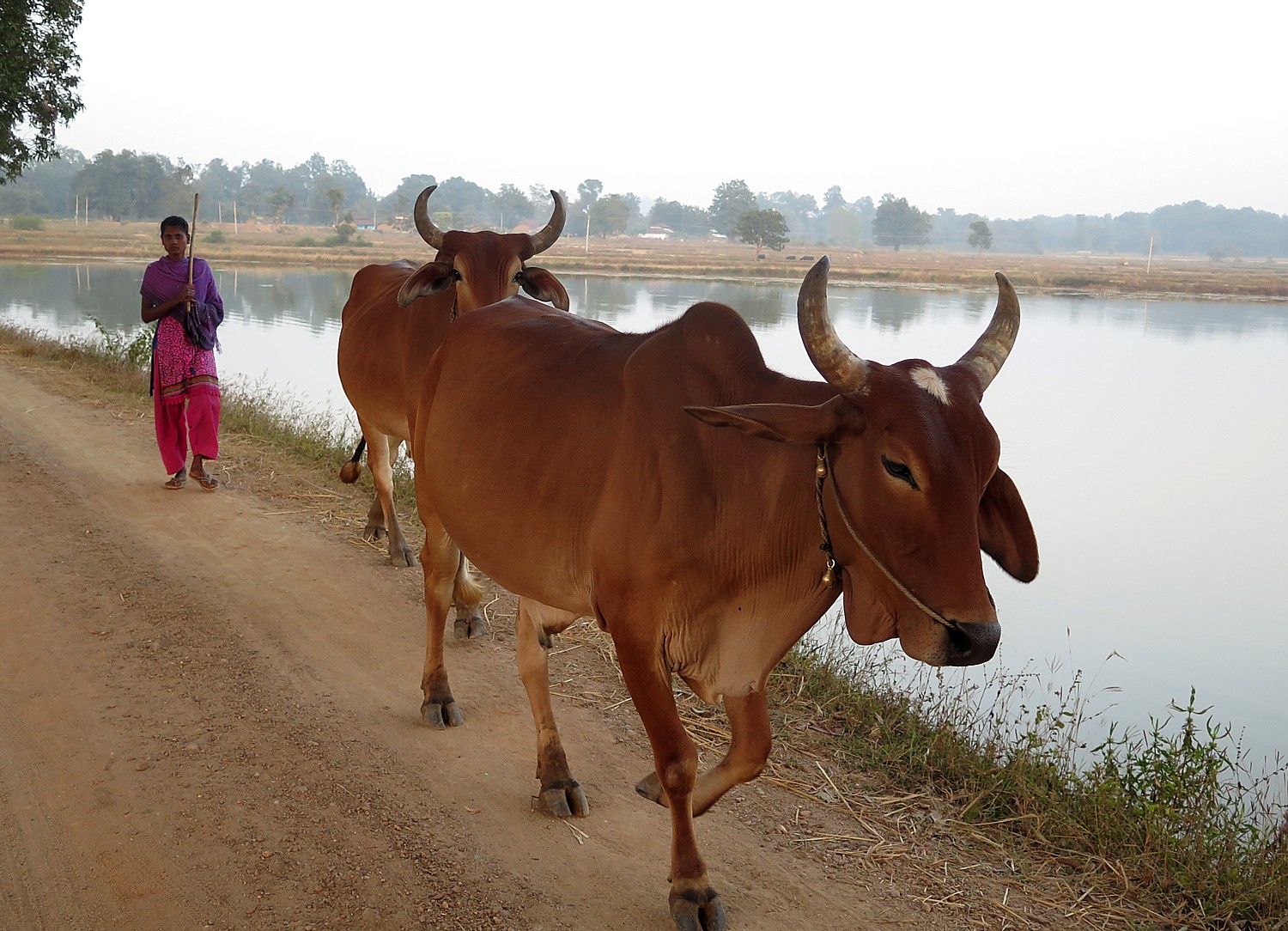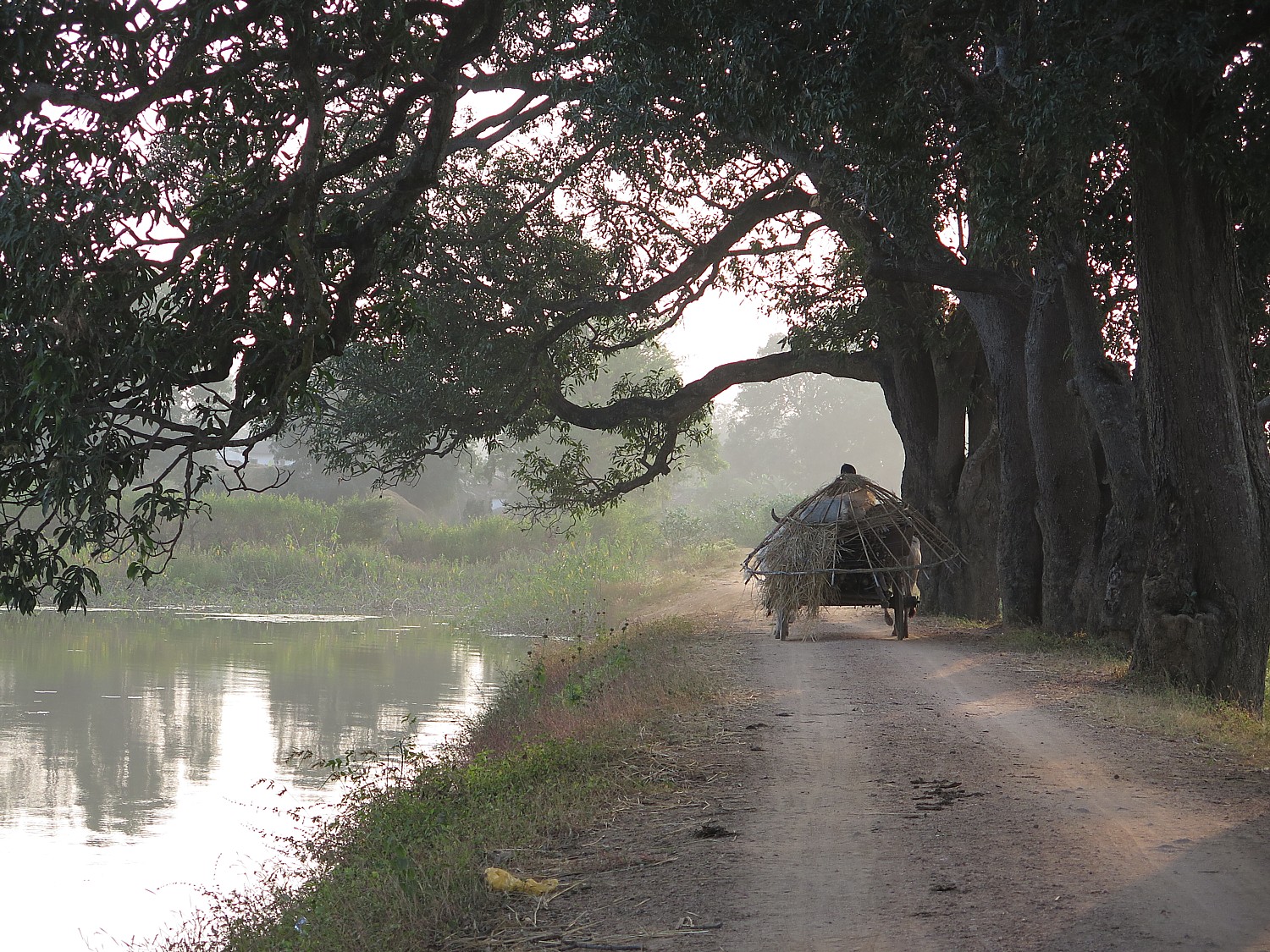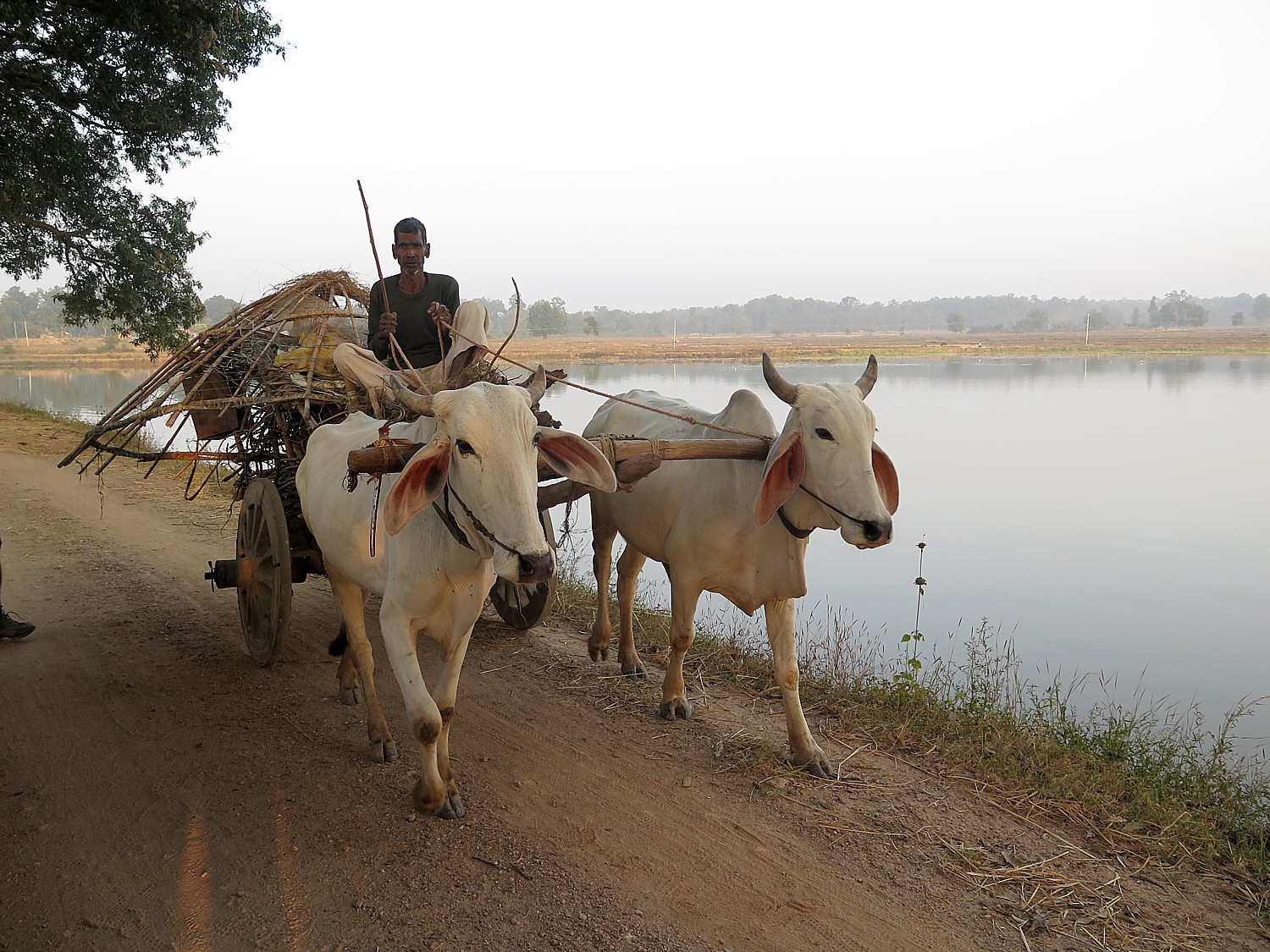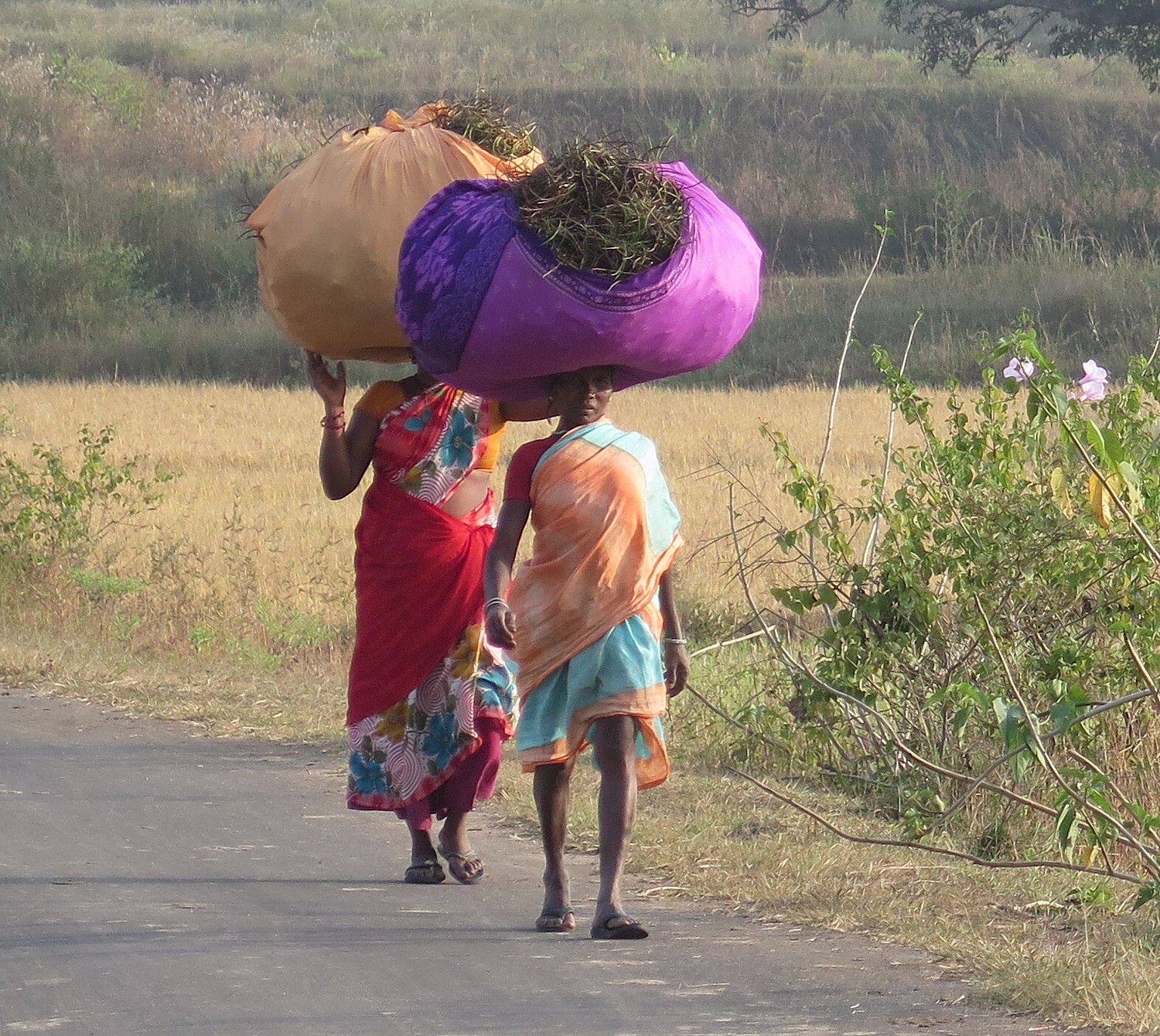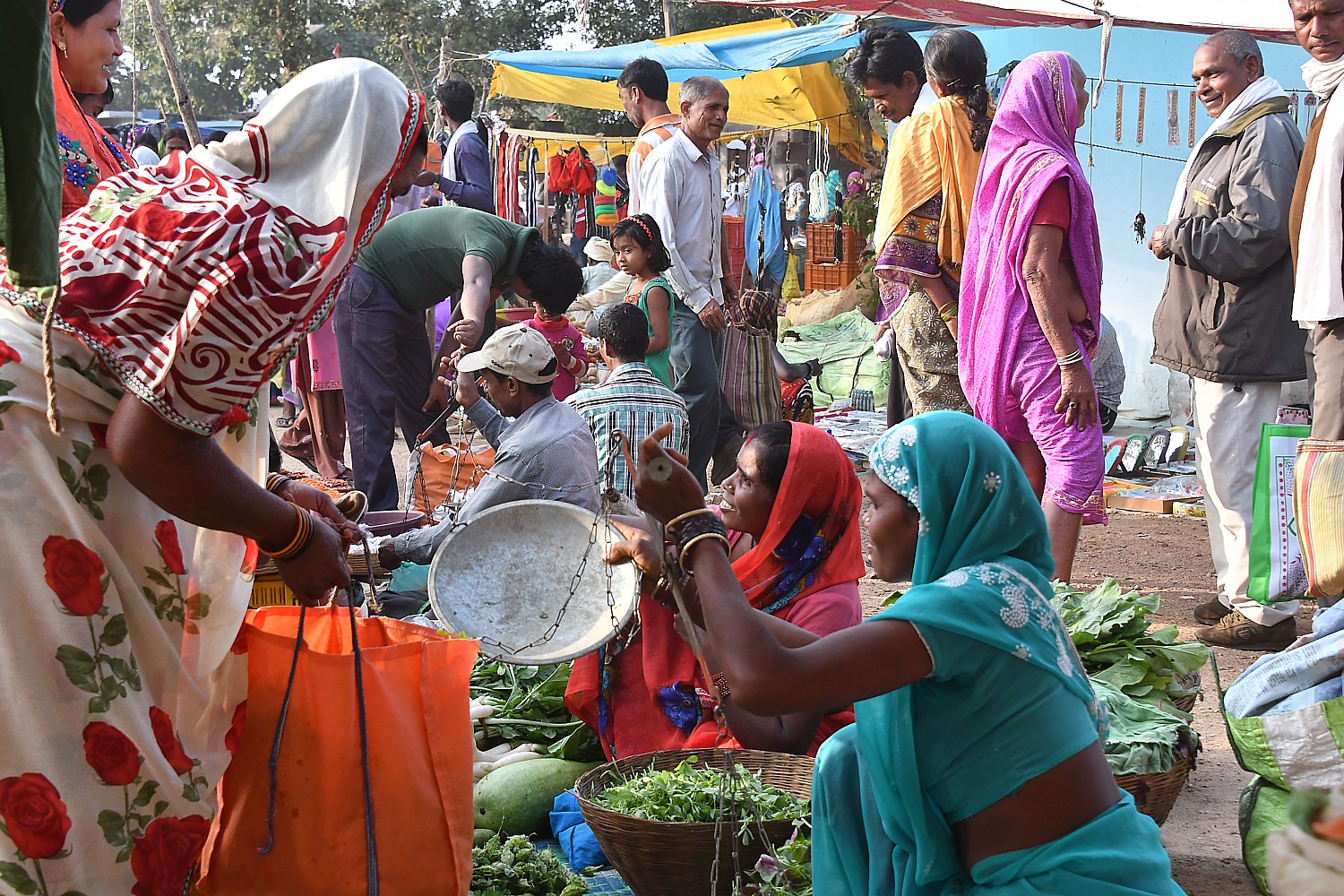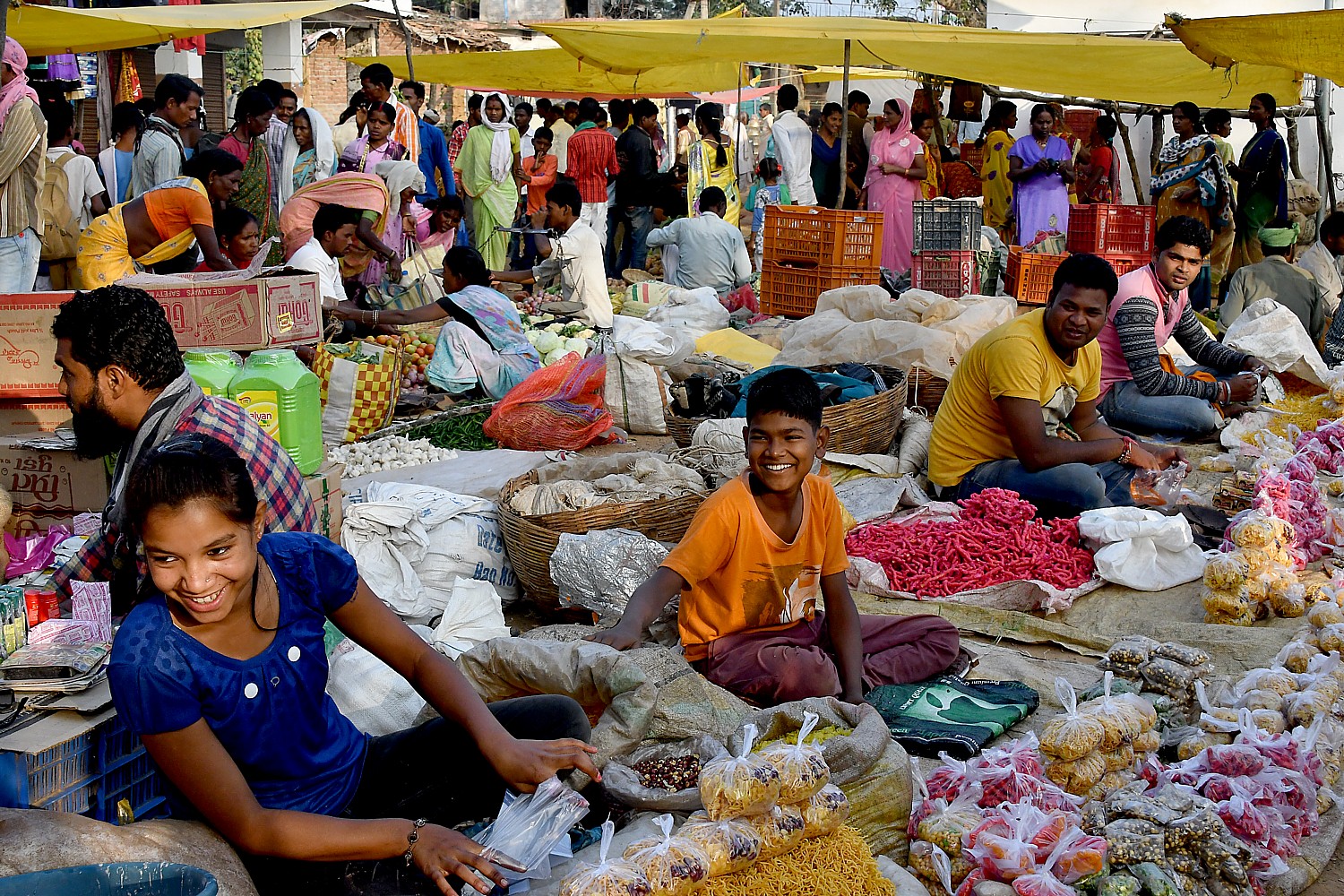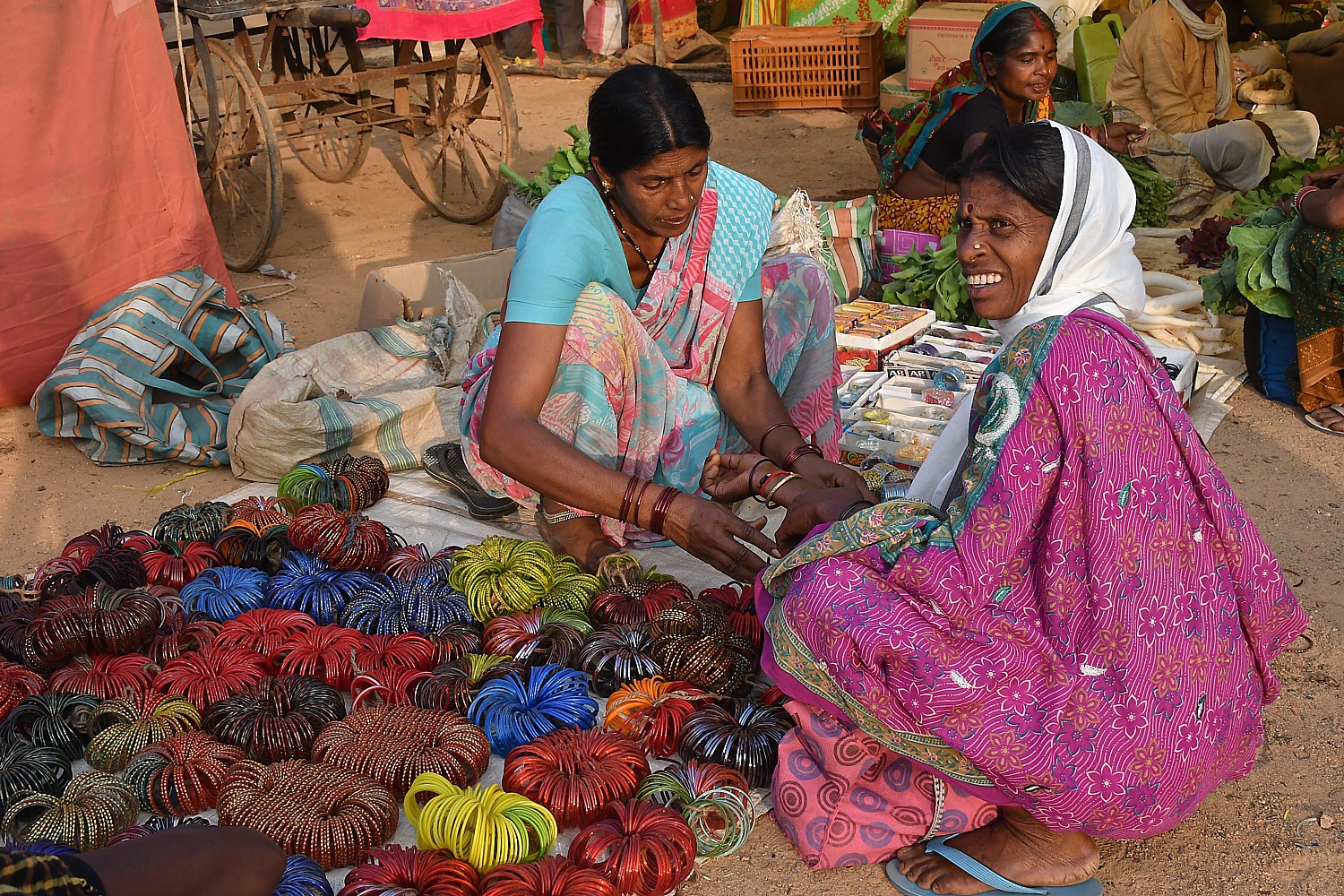
By Karen Rubin, Travel Features Syndicate, goingplacesfarandnear.com
(Our Royal Expeditions ‘Jungle Book Wildlife Safari and Cycling Adventure’ in central India began with our experience cycling through villages and the wildlife sanctuary, itself. See:‘Jungle Book’ Cycling Adventure Into Tiger Territory of India and ‘Jungle Book’ Cycling Adventure Through Local Villages of India’s Kanha National Park and continued with Pench National Park, India, is the Real Locale for Rudyard Kipling’s ‘Jungle Book’. Was Mowgli Real Too?)
It is approaching 5 pm, the final moments of our fifth and final game drive in six days of exploring India’s Pench and Kanha national parks, famous for tiger. So far, though we have seen amazing animals, birds, insects, the ultimate prize of a tiger sighting has eluded us. I have new appreciation for how elusive they are, particularly with the massive amount of forest territory and the fact they tend to be active before 8:30 am, then settle down in the jungle, coming out again in the evening in this season which is approaching winter.
I have also come to suspect they have also figured out the schedule for our safari vehicles which announce our coming with loud rumbling sounds.
The light is fading. This entire drive hastily arranged in Kanha by Royal Expeditions because none of us had spotted the tigers after the four scheduled game drives so far. Nara, our naturalist/guide from Taj Safaris, is laser-focused on finding a tiger for us. We have already gotten to see most of the animals for which these parks are famous – it has been thrilling to see them in such close proximity (I even got a brief sighting of a leopard!). But we have yet to catch even a glimpse of the star attraction: the tiger.
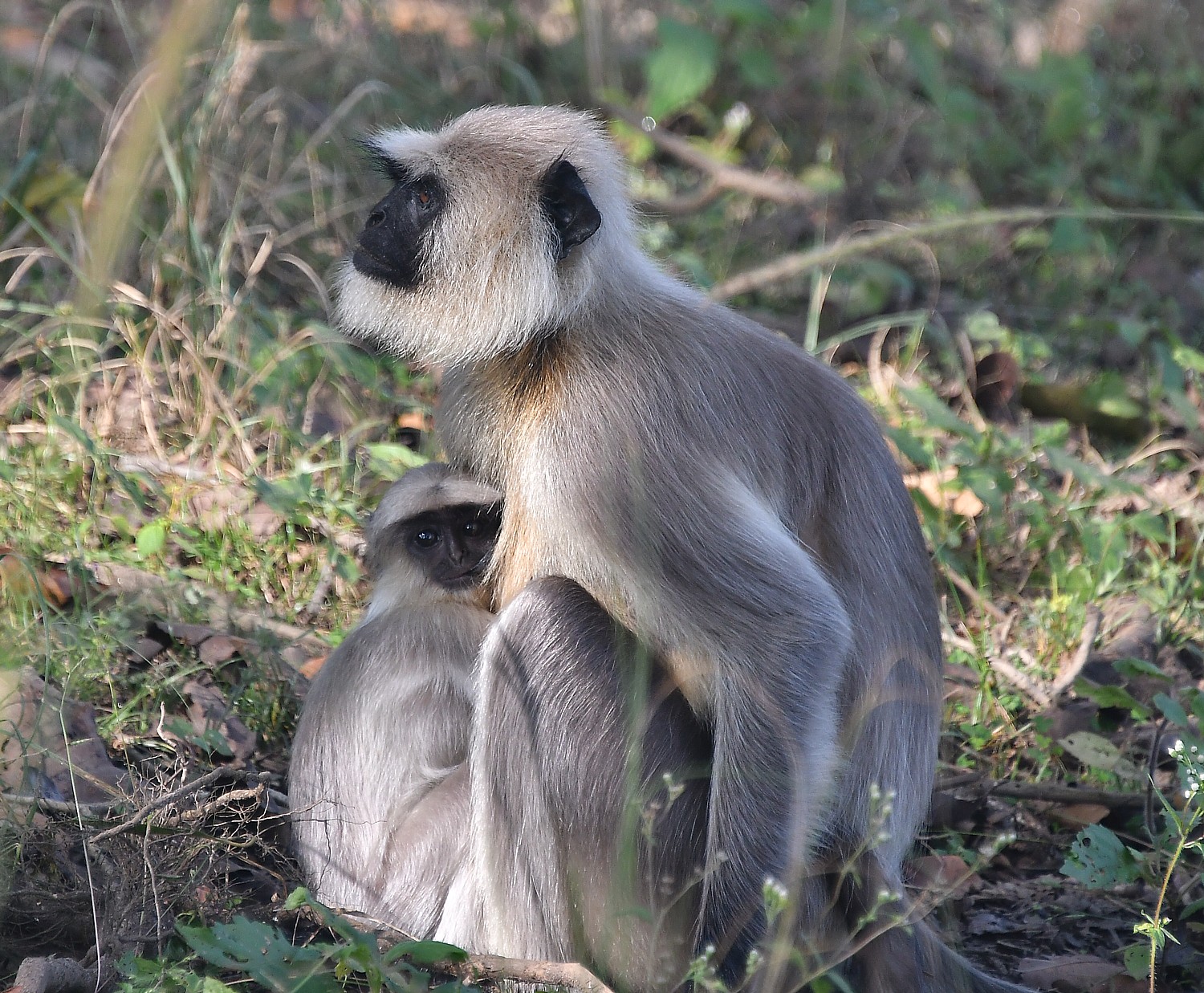
We have seen and followed tracks left on the sandy road; listened to the “alarms” sent up by the black-faced langur monkeys (that look like wise men) that provide our guide and naturalist the best clues as to the location and movement of the tigers. The scene is quite fantastic, in fact, when one guide gives a scouting report to another, and we all tear off at great speed.
But we have yet to have the luck of being in exactly right place, right time to view.
We only have 2 hours this afternoon, so he races to get to the most likely territory known for tiger – it takes 20 minutes to travel there from the entrance gate even driving so fast, bumping on the rough road and holding on tightly to the railing in the open vehicle, the park is so vast. It is quite a thrill ride.
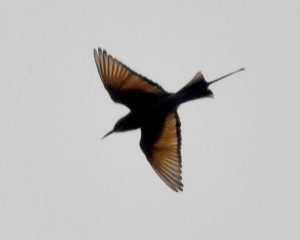
Periodically, especially where the trails cross each other, he stops, turns off the engine, and just listens. Sometimes there is just complete (eerie) silence, but soon a fantastic cacophony jungle sounds come into focus. We hear various bird calls, which Nara identifies for us, and we find ourselves searching the trees and the sky, contenting ourselves with shooting photos of fantastic birds.
Nara and the park guide examine prints in the trail – and can tell how long ago they were made, whether a male (more rounded) or a female (more rectangular and pointed).
It is just after the rainy season, so the forest is thick, verdant and cool (actually cold in the morning); but in the intense summer heat and drought, the forest becomes dry and brown and the tigers come out to water holes (some made by the park) more predictably. So while the conditions are generally more pleasant this time of year for viewing, sightings are trickier.
Nara and the park guide who is assigned to us confer. We move on.
If we meet up with another jeep (there aren’t as many in this section of the park), they share intel, sometimes strategizing.
Whenever he stops, Nara explains his strategy for finding the tiger, based on its patterns, which is really insightful.
Other safari goers we chance to meet during our drives- particularly where we stop for breakfast – tell of their luck. A British woman makes us jealous when she shows photos she snapped off a tiny point-and-shoot camera of a mother tiger with her cub, while we are there armed with our superduper DSLRs and 300 and 400 mm lenses, with nothing to show.
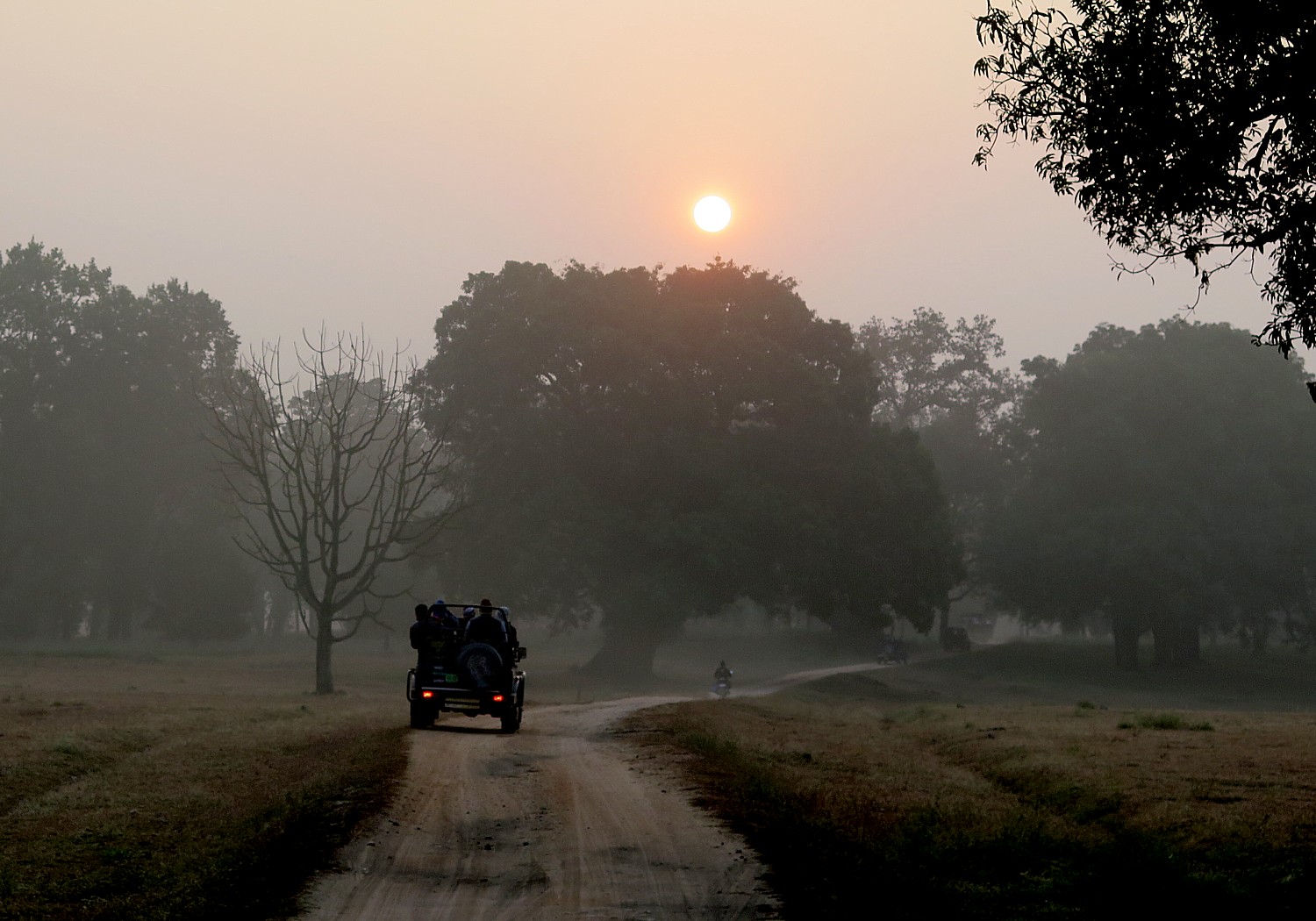
The best time to see the tiger is either very early – moments after arriving in the park (when I chance to spot a leopard on a ridge), or late in the afternoon. The park doesn’t open before 6 am, so we head out from the lodge by 5:30 am (they send us off with hot coffee and tea and biscuits, plus a blanket and hot water bottle for the safari vehicle), and it can take 40 minutes waiting at the gate in the surprisingly cold air, before we are processed, assigned a guide and a zone in the park, and allowed to enter.
So we race to get to some spot that our naturalist and guide believe has a good likelihood for spotting tiger. Of course, along the way and throughout our tour, we see an amazing array of animals and the guide patiently waits for us to take our shots before moving on, imparting information about the various animals we see. The landscape is really beautiful, and in the morning and afternoon light, dramatic. You never know what you will spot or when, so it is constantly thrilling – you are literally hunting (with a camera).
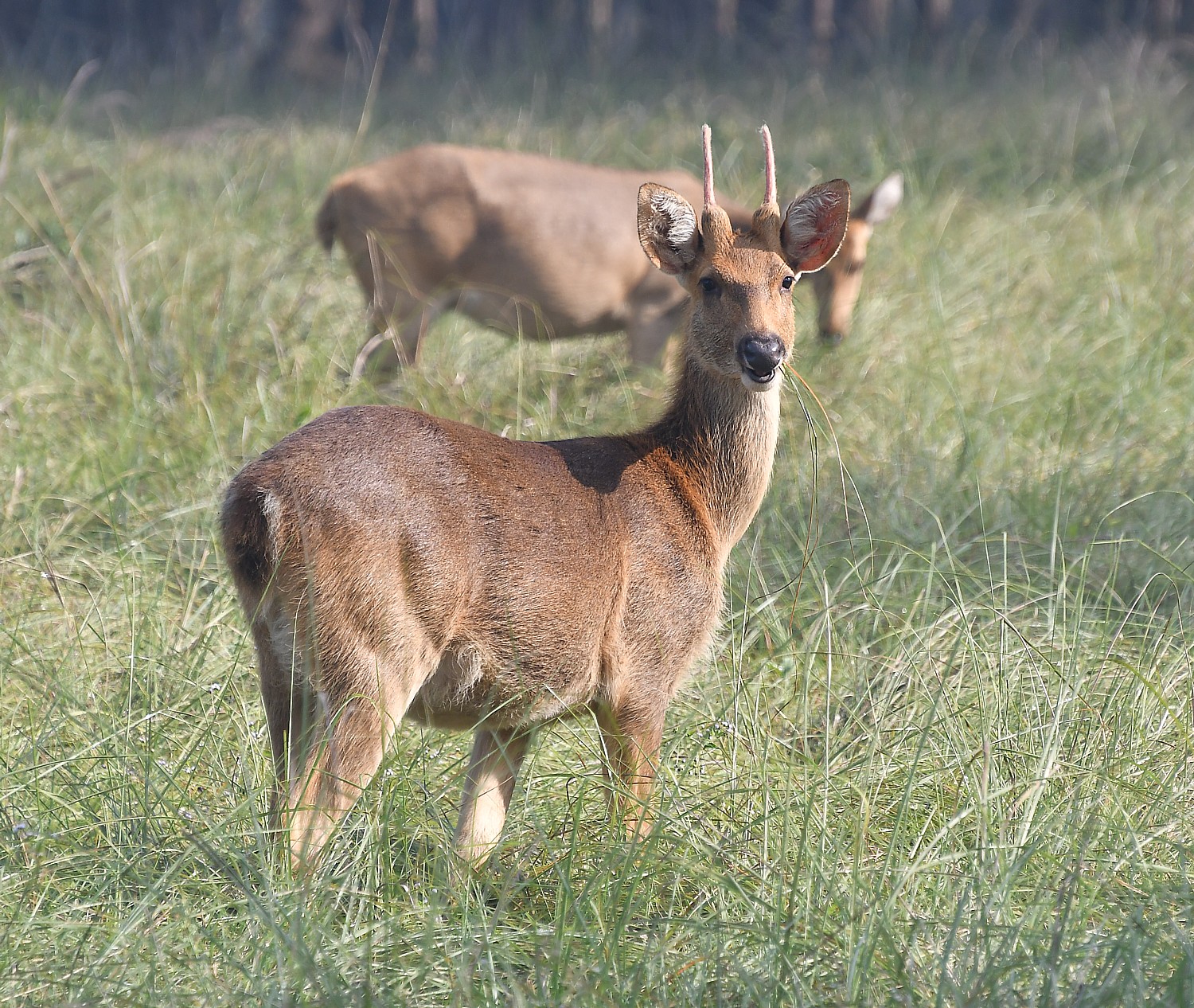
In the first couple of game drives, we all were a lot more casual, so spent a lot of time with the langur monkeys, rhesus monkeys, the jackals, the wild dogs, the wild pigs, the spotted deer and the swamp deer, and the myriad birds, not to mention the insects and trees that prove quite fascinating. But as we realized our window of opportunity for seeing the tiger closing, we were a lot more single-minded in that pursuit, rushing passed scenes of animals we had already seen before.
The naturalist and guide who accompany us are earnest to the point of frantic to succeed for their tourists. “Until people see a tiger, they can’t relax or do other things,” he tells us.
So when they get a hint of a tiger, they race with unbelievable speed, even dashing in reverse (hold on!) despite how crude the road (more of a trail) to get to a spot. Sometimes so many vehicles converge in both directions no one can move (this is particularly the case on a day that school and scout groups have come out by the dozens) – but the driver manages somehow to maneuver with tremendous skill.
This happens repeatedly with no sightings (which is why you will typically organize 3-5 game drives during your visit).
But here we are, at 5 pm, when Nara picks up on the alarm sent up by the langur monkeys. He says a steady alarm means the tiger is moving; intermittent means the tiger has stopped.
It’s our last game drive, hastily arranged by our tour company, Royal Expeditions (no small feat since permits have to be applied for in advance), our last chance. We follow the ‘alarm’ sent up by the monkeys. When their calls are not continuous, Nara can tell that the tiger has stopped moving, and calculates that it is in the middle of the forested area.
Nara has to guess which direction the tiger will move. After about 10 minutes waiting and listening (while we happily shoot photos of birds gathering in trees above us), he picks up again and goes to the last best spot, in the direction of a meadow with tall grass that leads to the water.
Several vehicles are already parked there and in an instant, excitement:
“People lose their minds when they spot a tiger.” The naturalist tells us. The drivers, also.
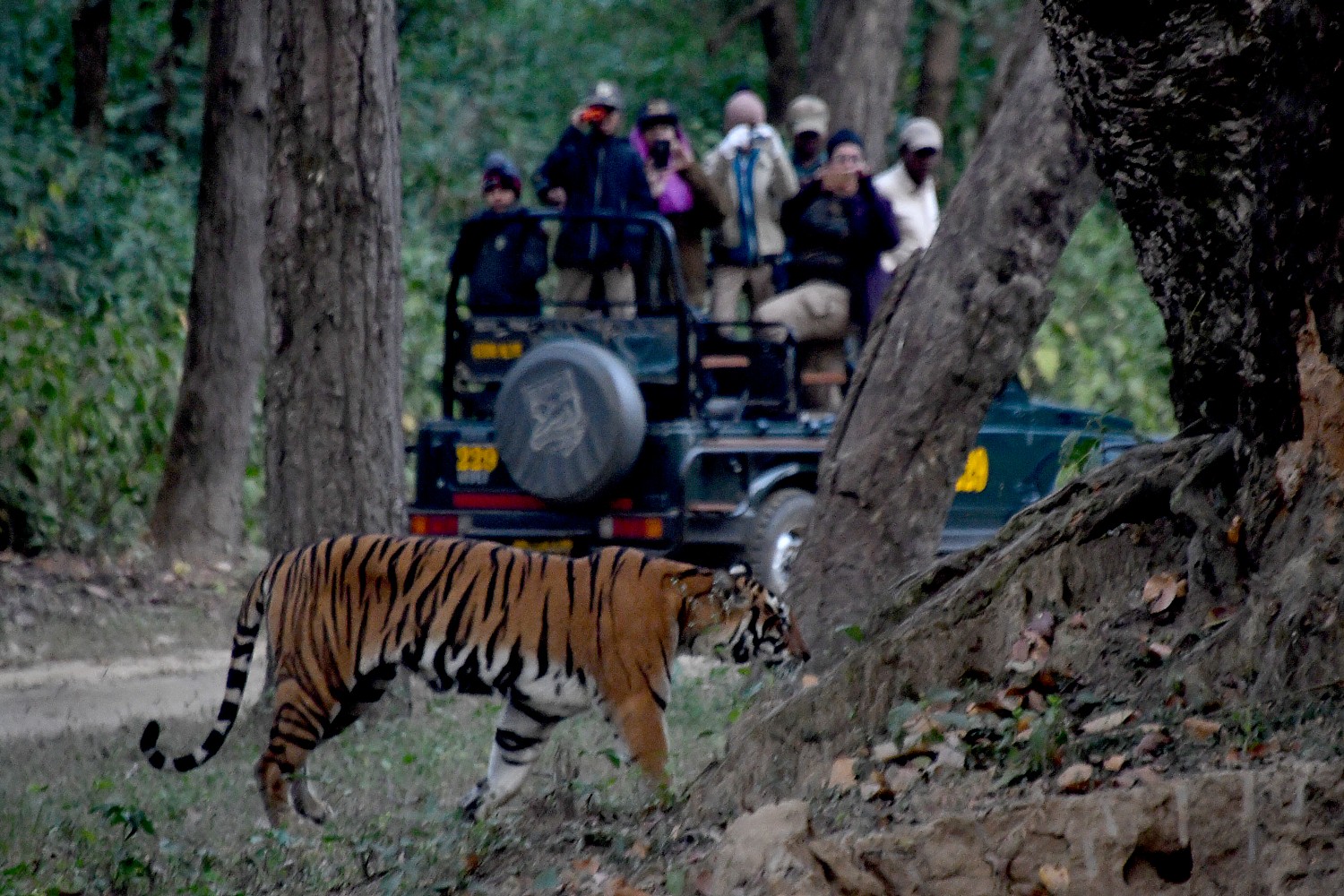
Just then, the tiger emerges from the forest and crosses the road, just a few feet from the vehicle ahead of us – but we aren’t in great position to see and I am thinking how ironic this is to finally be where the tiger is, but not to actually see it.
But Nara is not to be thwarted. He maneuvers our vehicle through this enormous crowd, going off the trail into the thicket, to get us into a good position.
Meanwhile, we are holding on in open vehicles, trying to snap shots before the tiger disappears again into the forest growth.
I snap, snap, snap – get a shot (I am thinking it isn’t great, but a shot nonetheless, but actually, afterward I see I got more than a few) –before the tiger disappears into the woods.
Nara moves the vehicle again and lo and behold, the tiger remerges from the wood, now crossing the road directly between our vehicle and another one, to a grassy area on her way to the water. Amazingly, a male tiger emerges and walks after her.
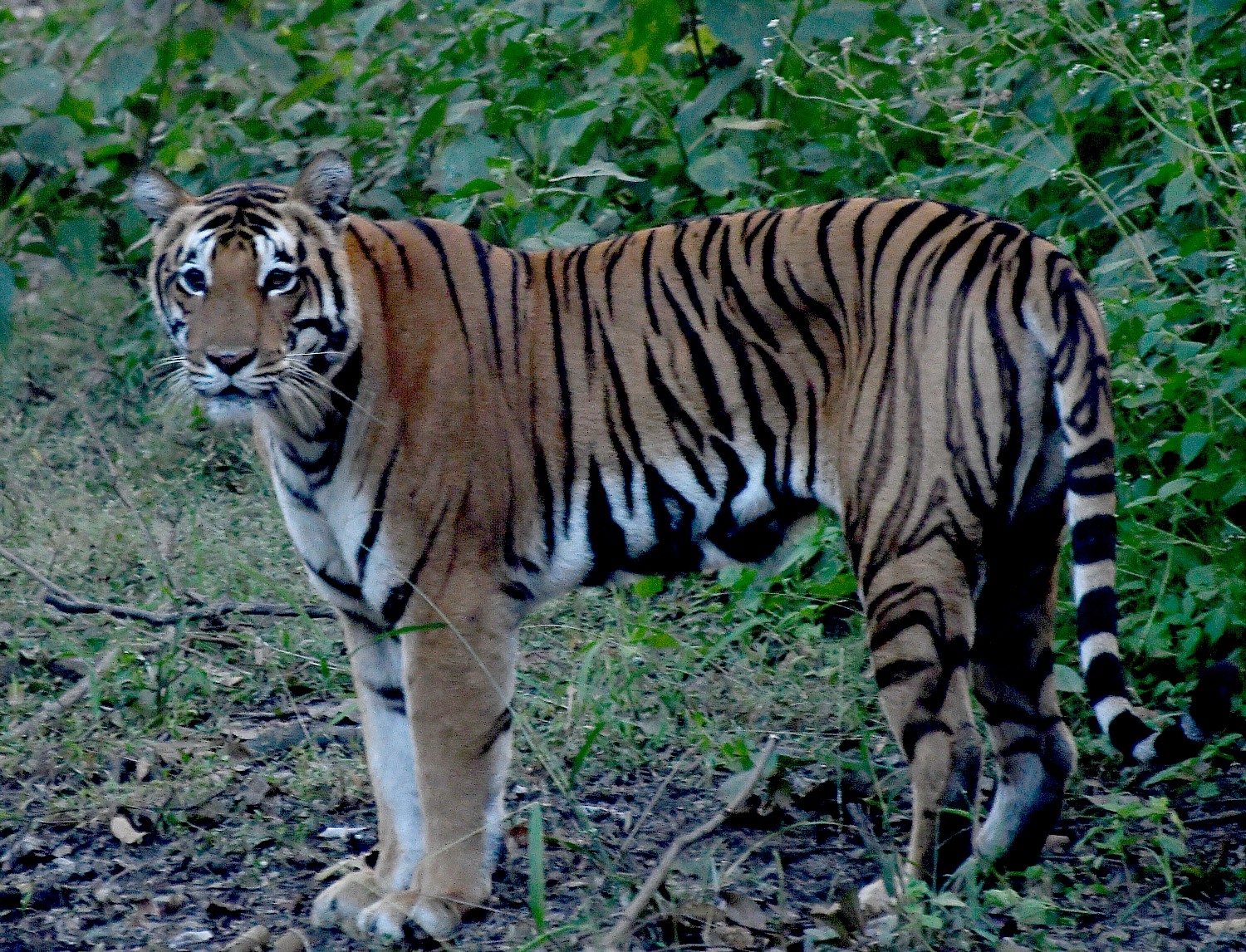
Most of the other vehicles have already headed out because it is literally closing time and the drivers are fined if they are late to the gate. But Nara stays. We get shot after shot as the light fades to dusk. I’m lucky, standing up on the highest perch, to get some shots of both tigers together.
I shoot frantically, not knowing how many moments I will have. I can’t even take the time to check if my setting is right. I’m going on instinct. I fight between needing fast exposure and high ISO to compensate for fading light, the darkness of the woods, and the tigers’ motion, and fear I might actually be overexposing.
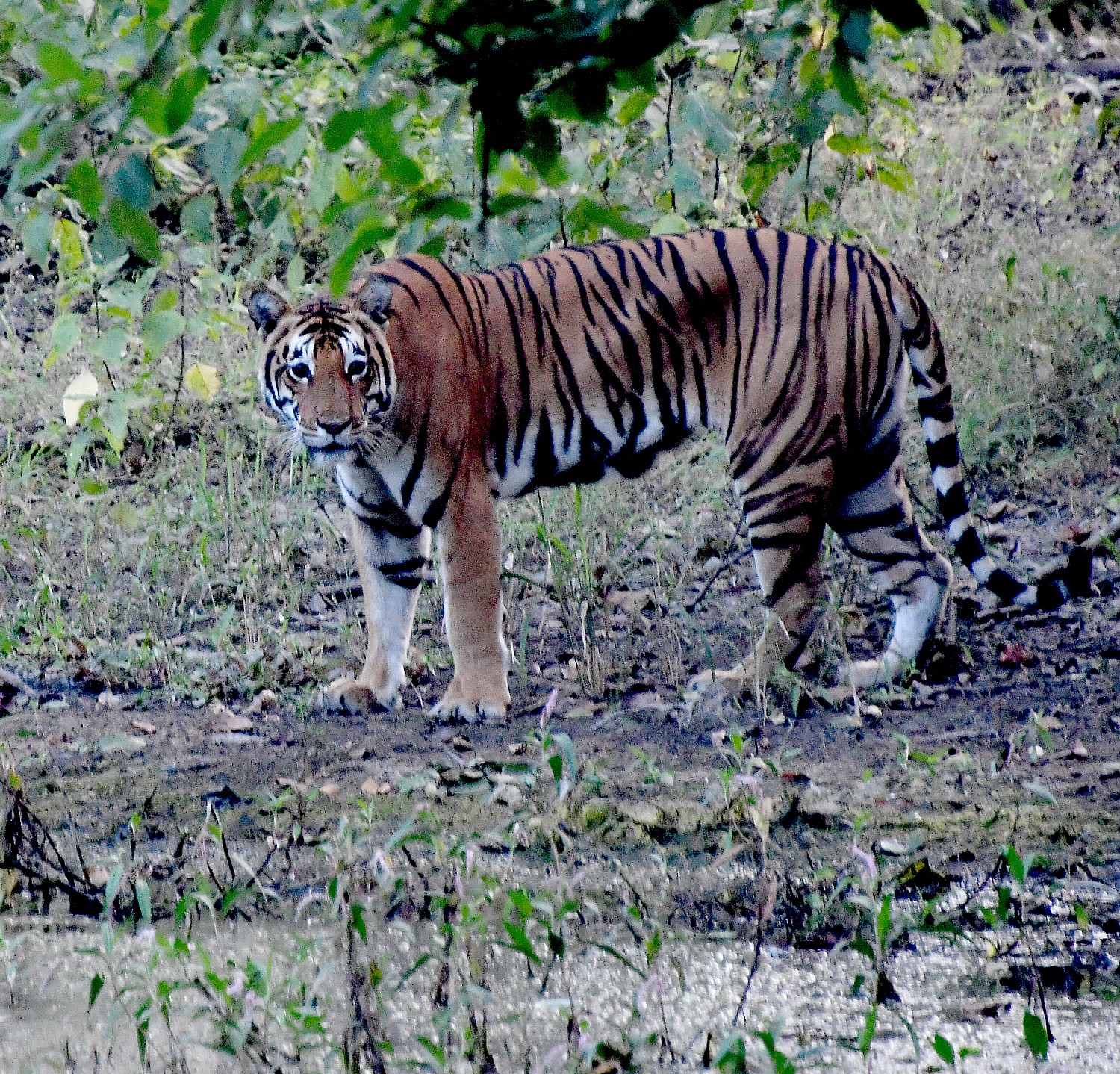
By now, we are the only vehicle still remaining. We watch as the female sits in the grass, looking back at the male as he approaches her. It is quite a scene.
Finally, Nara says we have to leave and he tears off at great speed to make it back in time, while we are giddy with our good fortune: We saw not one, but two tigers!
It’s an intense, thrilling feeling. I realize I have barely taken a breath.
The game drives have been fascinating. It is thrilling to not know what you will see, or when. Then momentary, serendipitous flashes.
Seeing the animals in their habitat, all sorts of questions and considerations come to mind.
And the landscapes are just beautiful.
Kanha’s Abundance of Animals
It is remarkable how this short distance away from Pench National Park where we spent the first three days of our “Jungle Book Wildlife Safari and Cycling Adventure,” the ecology changes so much. The Kanha forest (“jungle is the Hindi word for forest) is much thicker, and because of the higher elevation, is much cooler. The Kanha National Park spans nearly 2000 sq km (only one-fifth open to tourists), and currently has an estimated 49 tigers.
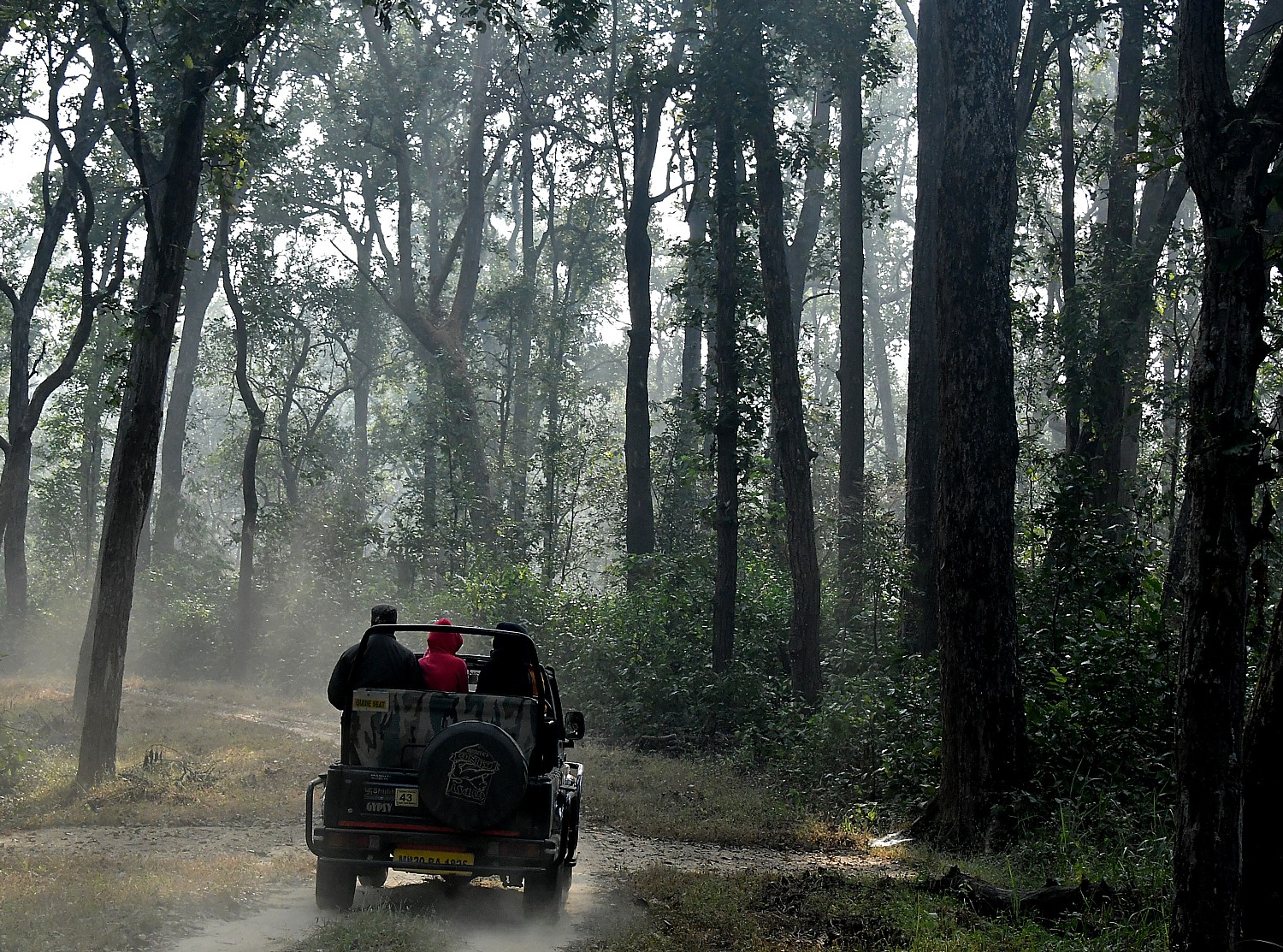
Instead of a teak forest like Pench, this forest is mainly sal – a wood that was used for railroad ties; three kinds of bamboo (bamboo gets flowers only once in its life, then dies), the saga tree (the tree, with bark that looks like crocodile hide, is worshiped by the people who harvest water from it to drink when necessary); and the Mahua tree (the flowers are made into a liquor which is a big money-maker for locals. “People only collect the flowers that have fallen from the tree, which drop after midnight, to make liquor. If animals eat the flowers, they also get drunk – that’s why you might see a drunk monkey.”
The first evening at the Kanha Earth Lodge, where we stay during our time here, there is a slide presentation by the naturalist about the animals in the park”
The male spotted deer (chital) has antlers to attract a female. “He will put grass into the antler to look more handsome.” (I actually saw one which had managed to find some blue plastic string for decoration).

This park also has sambar (Asia’s largest deer, it depends on its sense of smell, but will foolishly go right up to a tiger to smell it); the Indian Muntjac (barking deer), which is only found in a bamboo forest. We even get to see all of these, including the Barasingha (swamp deer) which was endangered in 1970s when there were only 66 left (it only gives birth to one baby a year, but at Kahna, they made breeding pairs and are repopulating).
There are also wild pig; gaur (like a big bull with horns), jackal (they can get drunk eating the Mahua flowers; dhole (wild dogs; only the alpha male and alpha female are allowed to mate); sloth bear.
There are more leopards than tigers, and unlike the tigers, are not endangered.
Leopards are sly, he tells us – they eat dogs, goats on periphery (that is, in the villages). They can climb trees so have more food options (monkeys) and hunt at night (which is why they are harder to spot during the day). “They call the leopard the ‘Ghost of the Jungle’ because one minute you see it and the next, disappears.”
Meanwhile tigers are more discriminating about mating – the male can mate with three females (depending upon food) and if the female he wants to mate with has cubs, he will kill the cubs in order to mate with her.

We are up before dawn for our first game drive in Kanha, which is supposed to be our last (we’ve had three in Pench National Park so far). It is quite an experience to be at the park as the sun rises, and we head out on these dusty dirt roads with the red sun in our face, mist on the meadow, and later, as the sun filters through the trees.
We are so earnest to spot tiger, we tell our naturalist/guide not to bother with the breakfast gathering, but that we want to spend as much time as possible in our hunt to see the tiger.
He thinks there is a sighting and speeds off, frantically. There are five jeeps doing the same thing, one driving backwards at a furious pace.
Then we all stop still. Listen. A hand signal, and we all take off again.
A young cub crossed road, the guide announces. We missed it.
We hear an “alarm” from the langur monkeys and speed off again, bouncing, rocking,
No tiger. But we content ourselves with a sighting of White throated kingfisher and a gathering of hard ground swamp deer found only in Kanha – a female and one young male (with just the beginning of antlers) and two babies (as adults, the males stay separate from the females).
As we leave the park, we actually meet Munna, the park guide for whom the park’s famous tiger was named. “Munna” means “small child” and the fellow never liked the name very much. He had a limp, and the tiger was injured and had a limp, so they named the tiger “Munna” also. “After a tiger was named after him, he didn’t mind his name.”
On our way driving back up the forest road to the Kanha Earth Lodge, I spot the Greater Racket-tailed Drongo – the bird I have been dying to photograph – and our guide pulls over. We become engaged in chasing after this bird, then another, then a staggering array of birds: a scarlet minuet (male), a black-hooded Oriole, a Lesser Golden-backed woodpecker – more birds in this small area than you might see in an aviary. He tells us it is a hunting flock.
While seeing leopards or tigers might be the brass ring, just being on this carousel is sheer delight – the number and variety of animals we see at close range, the birds, even the insects are fascinating.

Kanha National Park Kanha, one of the first tiger reserves established by India under Project Tiger (1973), is also one of India’s largest National Parks, encompassing nearly 2,000 sq. km of deciduous forest, grasslands, hills and gently meandering rivers and home to literally hundreds of species of animals and birds. Prior to this, the whole area was one enormous regal hunting ground, its game the exclusive preserve for high-ranking British army officers and civil servants seeking trophies for their colonial bungalows. One vast plain where we see a herd of deer used to be a village of 500 people, who were relocated when they created the park.
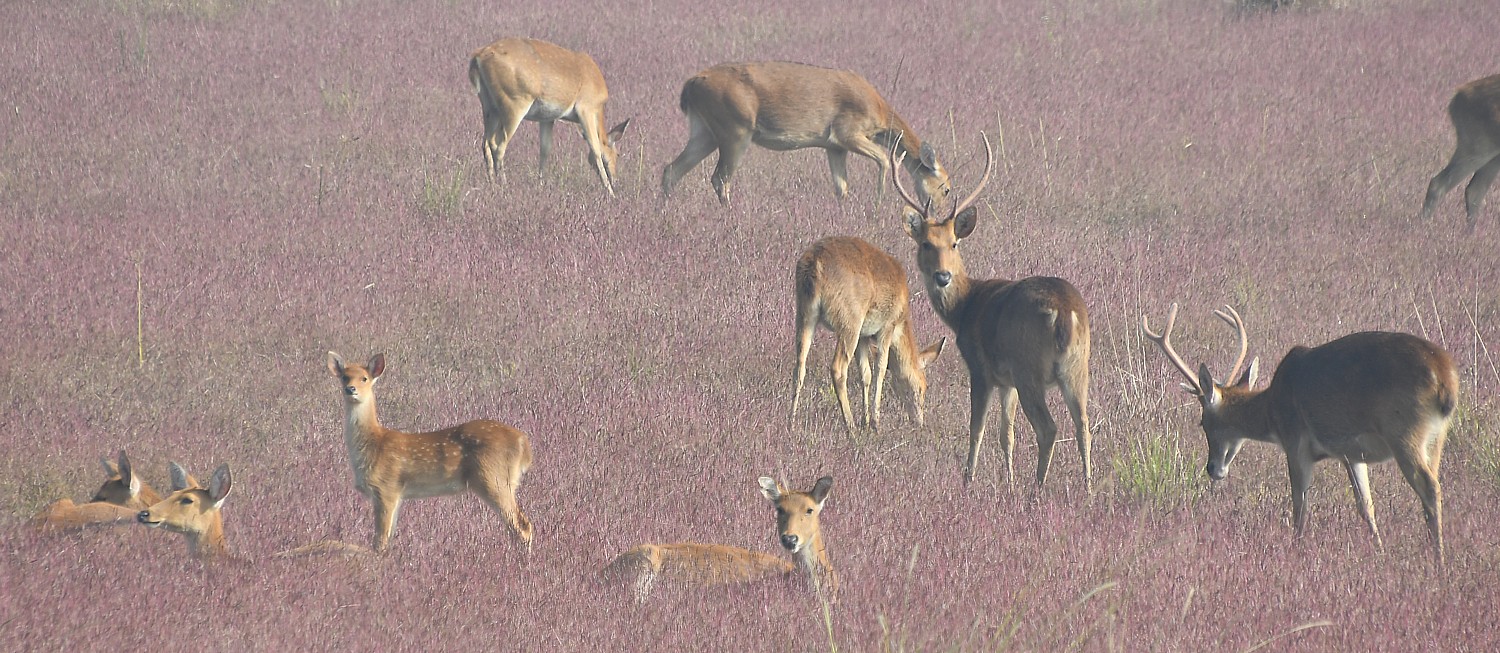
This picturesque reserve presently boasts of having large tiger population, as it has the ideal habitat. The meadows (called maidans) are surrounded by thick forests that create ideal grazing spots for the hundreds of chital deer, barasingha and sambar deer, which means they are ideal hunting ground for tigers, leopards, jackal and wild dogs (all of which we get to see). Kanha offers the last remaining habitat of the hard ground barasingha (swamp deer), which was brought back from the brink of extinction (which we get to see). During our visit, we also get to see many of the other animals that live here: wild pig, Rhesus Macaque, Langur monkey (my favorite). I think I even got a glimpse of a gaur (Indian Bison) before it retreated into the woods.
Other animals that are here but we don’t get to see include sloth bear, striped hyena, muntjacs (barking deer), chousingha (four-horn antelope), jungle cat and mongoose.
This diverse landscape also supports more than 250 species of Indian birds including migratory species. The Indian jungle fowl, which is the ancestor of domestic hens, is common here.

For bird watchers and photographers, Kanha’s diverse landscape also supports more than 250 species of Indian birds including migratory species, a mind-boggling number we actually get to see during our brief time: Green Footed Pigeon, Pygmy Woodpecker and Tickell’s Blue Flycatcher. Little Minivet, Scarlet Minivet and Long Tailed Minivet can be seen at Parsa Toala grasslands. Resident common raptors as the Crested Serpent Eagle, Crested Hawk Eagle, Crested Honey Buzzard, White Eyed Buzzard, Shikra and Common Kestrel can be sighted hunting and nesting in tall trees.
Kanha Earth Lodge
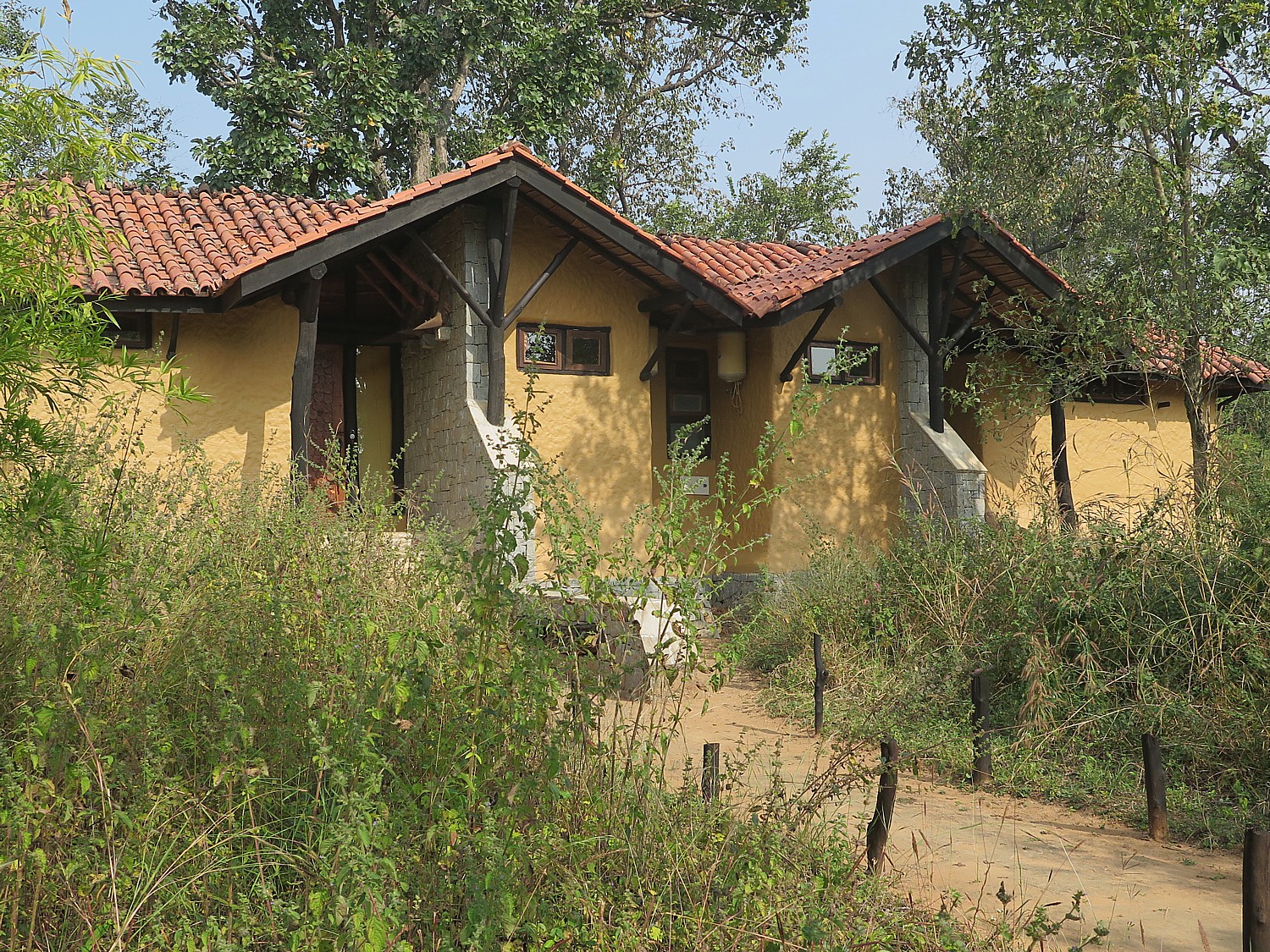
Like the Pench Tree Lodge which we enjoyed during our time at the Pench National Park, the Kanha Earth Lodge (www.kanhaearthlodge.com) enhances our safari experience. It is also an ecolodge made of all natural materials that is stunning in its design that blends so perfectly without adverse impact on the environment, uses local and traditional art (there is even a fellow who paints tigers), has its own organic garden and a lovely swimming pool, a stunning lodge (WiFi available in the office), and each night, offers fascinating presentations by a naturalist about the wildlife and the national park, while serving appetizers.
The dining room reminds me of a castle, actually, with the stone and wood, vaulted ceiling, candelabra and local artwork.
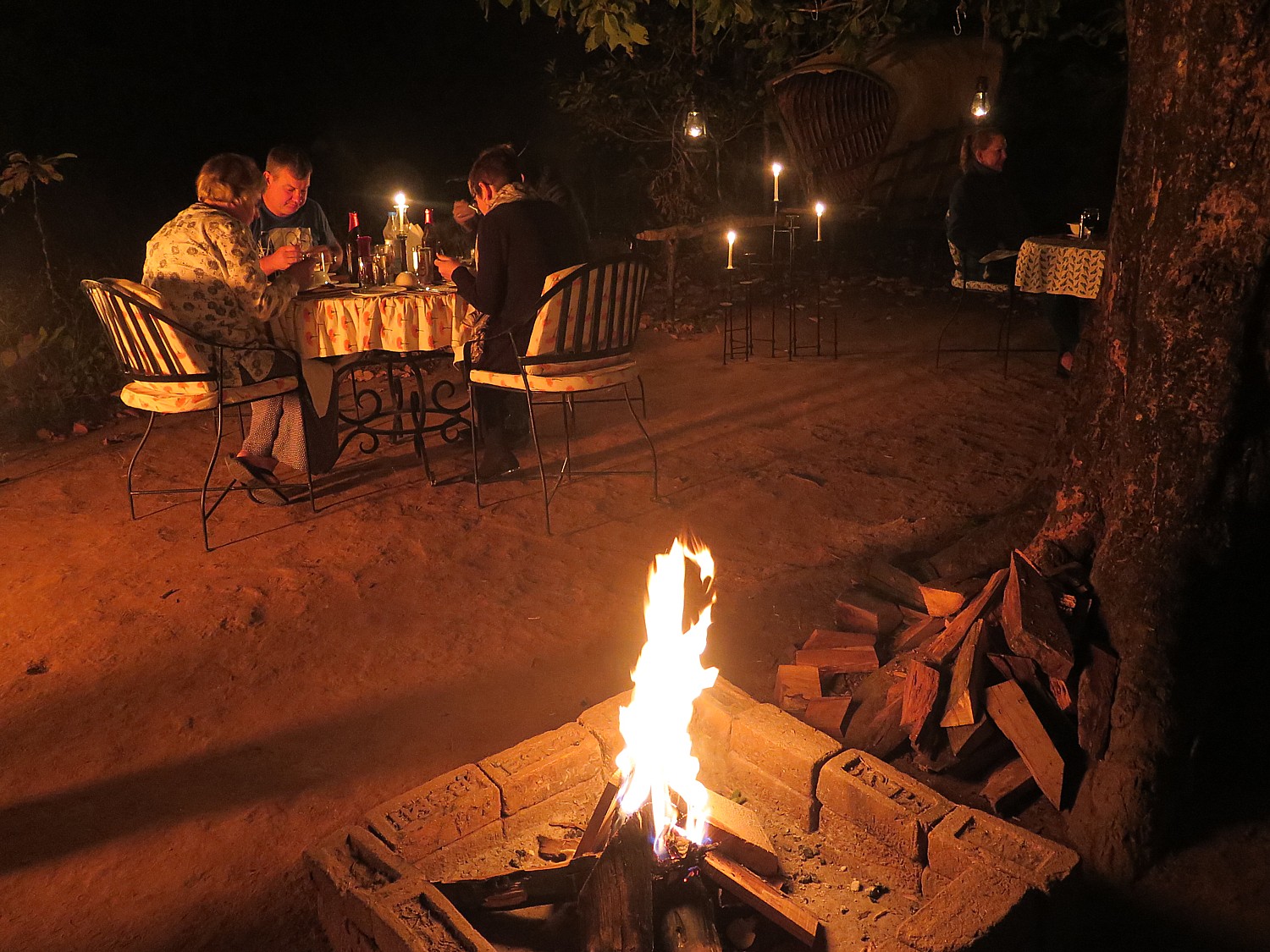
One evening, dinner is served outside in a garden by firelight. The food –and presentation – is superb.
The service is impeccable, which you note immediately with the staff on hand as our van pulls up, with moist towels and a refreshing beverage. The lodge supplies coffee and tea and bottled water in the rooms. When we leave for our game drives at around 5:15 am, they have coffee and tea and biscuits on hand, blankets and even hot water bottles for us in the jeeps.
The room is actually an entire villa, with massive living spaces and has its own patio that faces out to the forest.
In the evening, with the turn-down service, they provide a hot water bottle, and we are told that our rooms are inspected for possible intruders which might have hidden away in dark places.
The lodge is located away from a very busy tourist area – you feel you are in the national park – but very close to villages and farms, so you feel very much a part of the local culture. At night, we hear drumming of a festival.
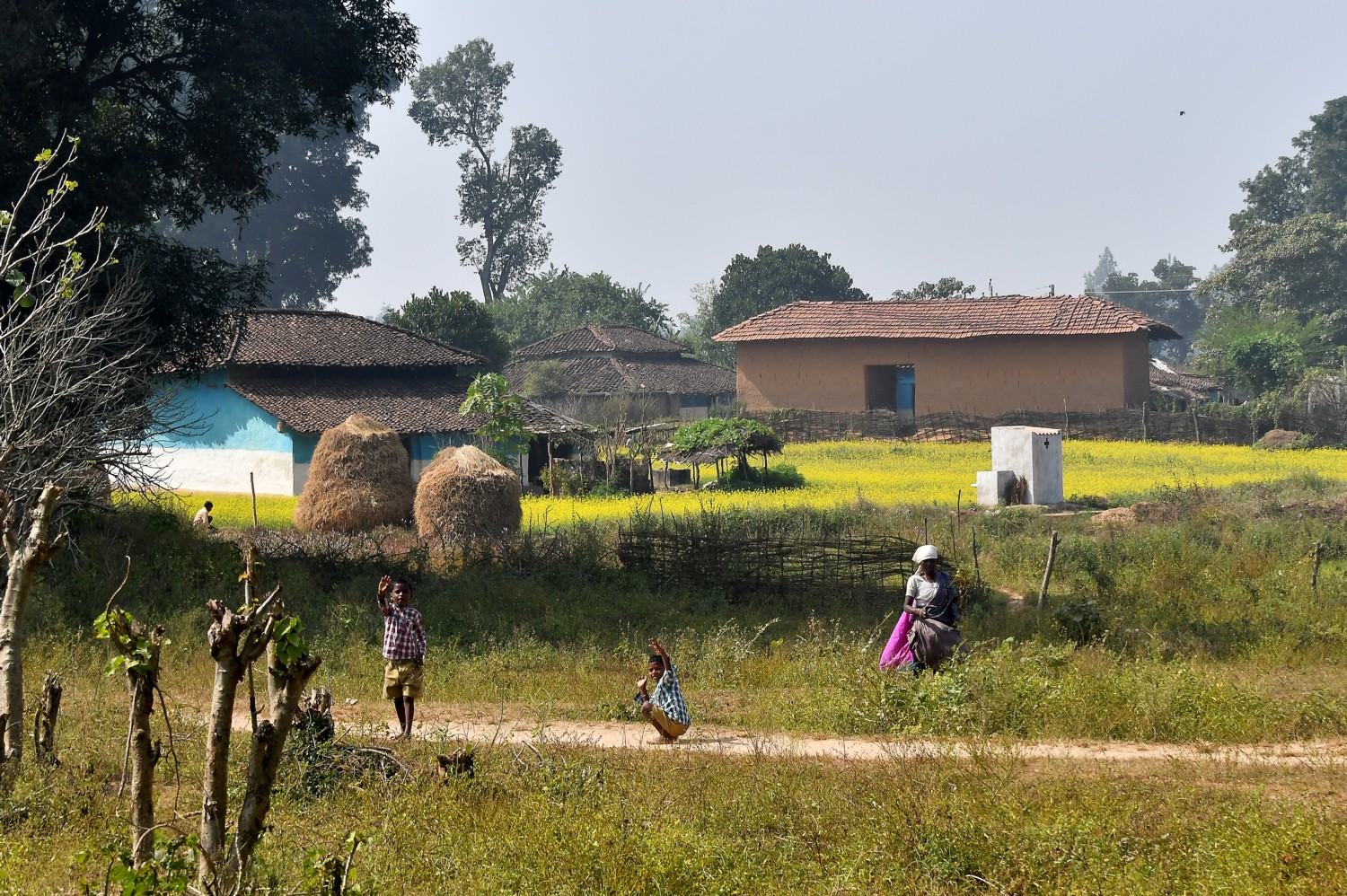
Both ecolodges (only operated October to June) that we enjoyed are part of Pugdundee Safaris (www.pugdundeesafaris.com), which operates six ecolodges (Kings Lodge and Tree House Hideaway in Bandhavagarh; Denwa Backwater Escape in Satpura; Ken River Lodge, Panna; as well as Barahi Jungle Lodge in Chitwan, Nepal) as well as wildlife safaris, which means a kind of seamless quality.
For more information, contact Royal Expeditions Pvt. Ltd. www.royalexpeditions.com, tours@royalexpeditions.com, or Royal Expeditions’ North American representative: kiki@wanderlustportfolio.com, 720-328-8595.
See also:
‘Jungle Book’ Cycling Adventure Into Tiger Territory of India
‘Jungle Book’ Cycling Adventure Through Local Villages of India’s Kanha National Park
Next: The Pushkar Camel Fair
____________________
© 2017 Travel Features Syndicate, a division of Workstyles, Inc. All rights reserved. Visit goingplacesfarandnear.com and travelwritersmagazine.com/TravelFeaturesSyndicate/. Blogging at goingplacesnearandfar.wordpress.com and moralcompasstravel.info. Send comments or questions to FamTravLtr@aol.com. Tweet @TravelFeatures. ‘Like’ us at facebook.com/NewsPhotoFeatures


